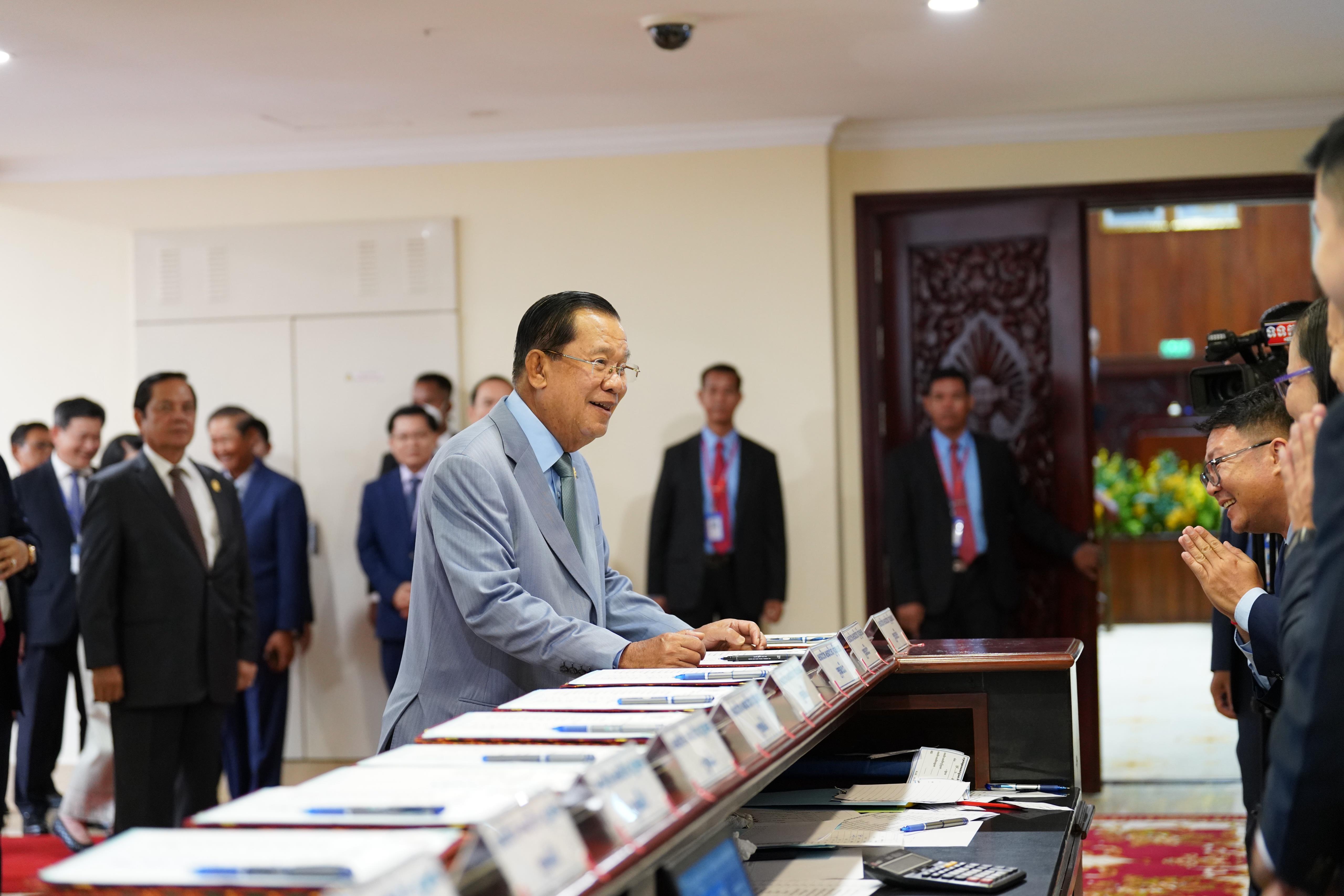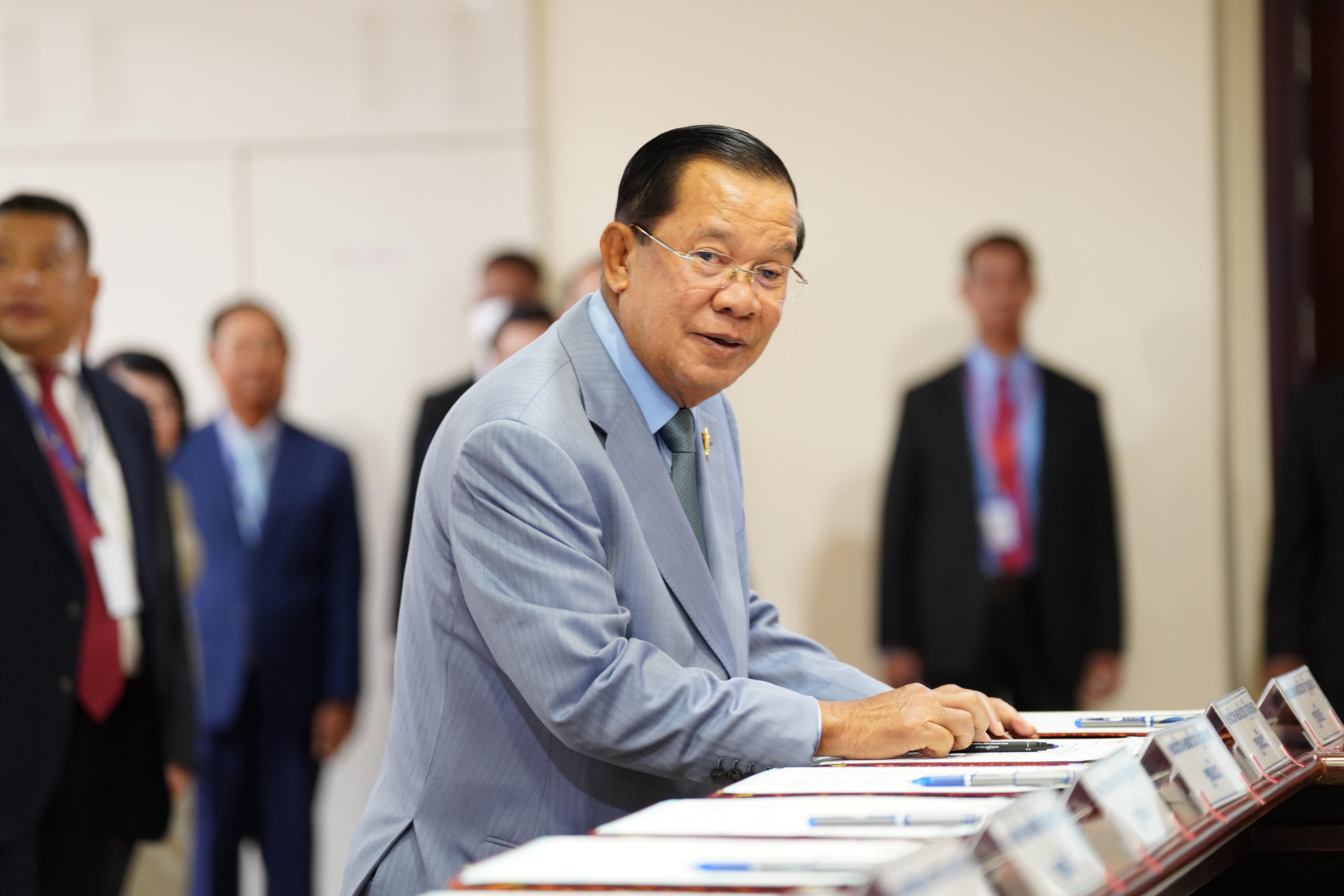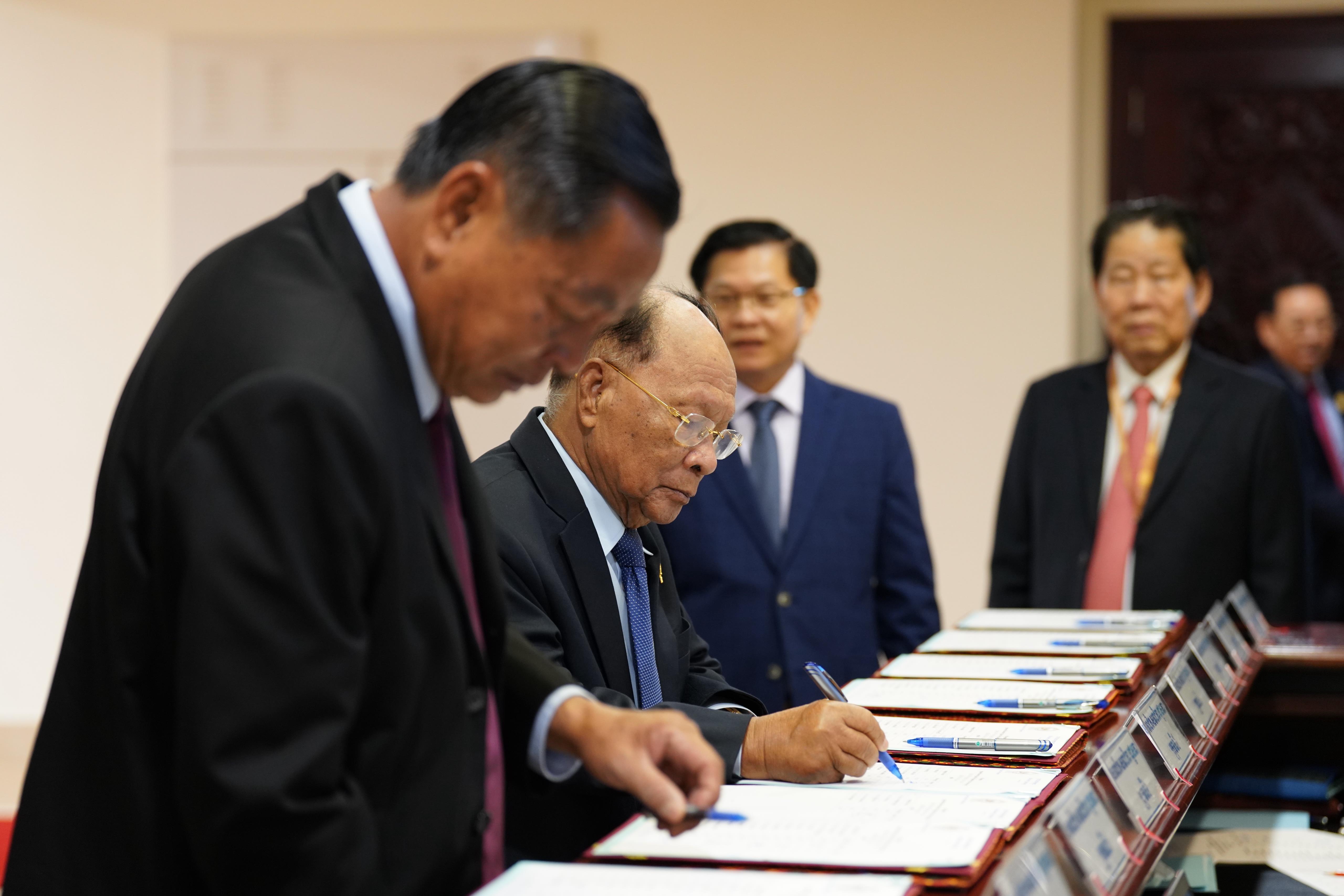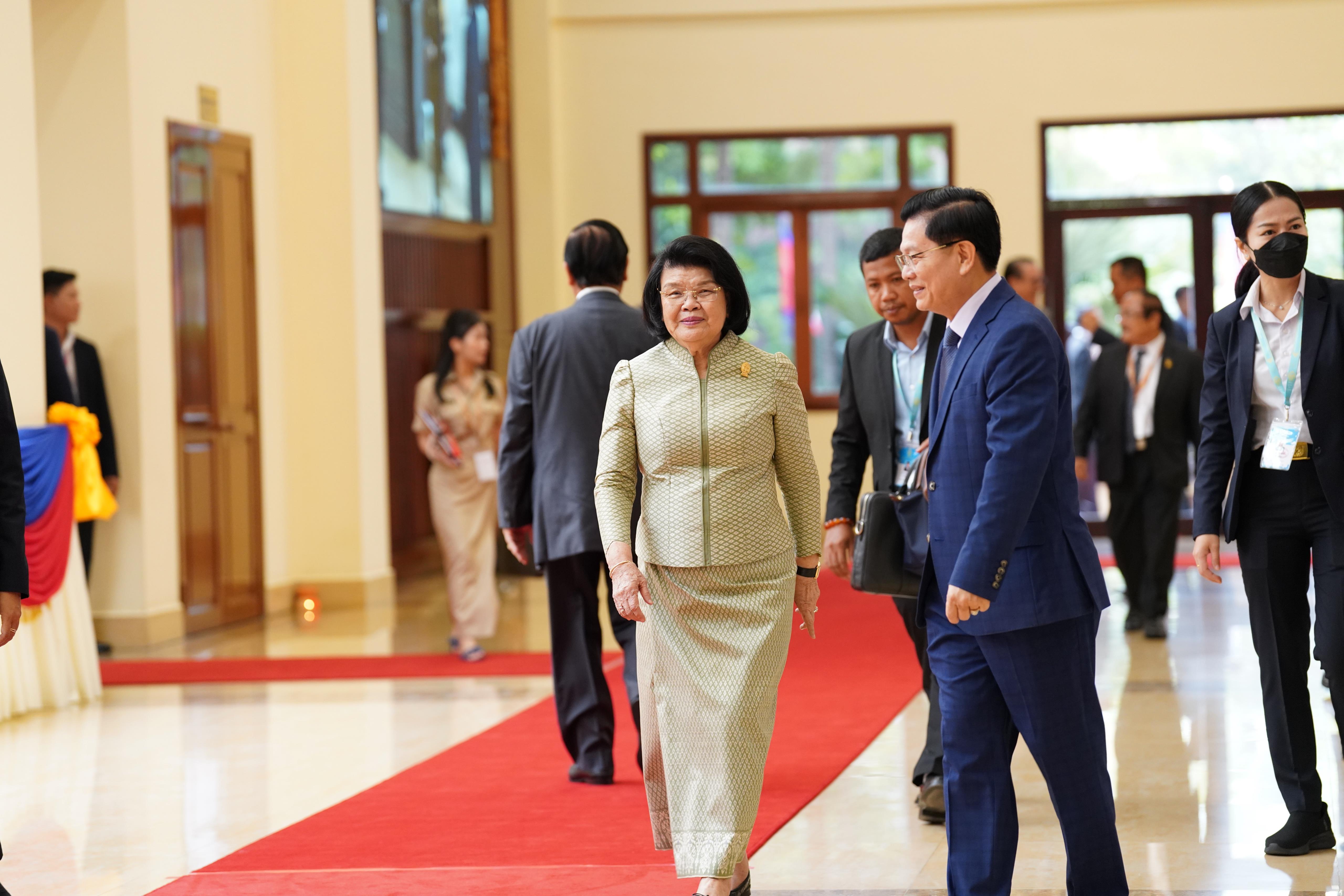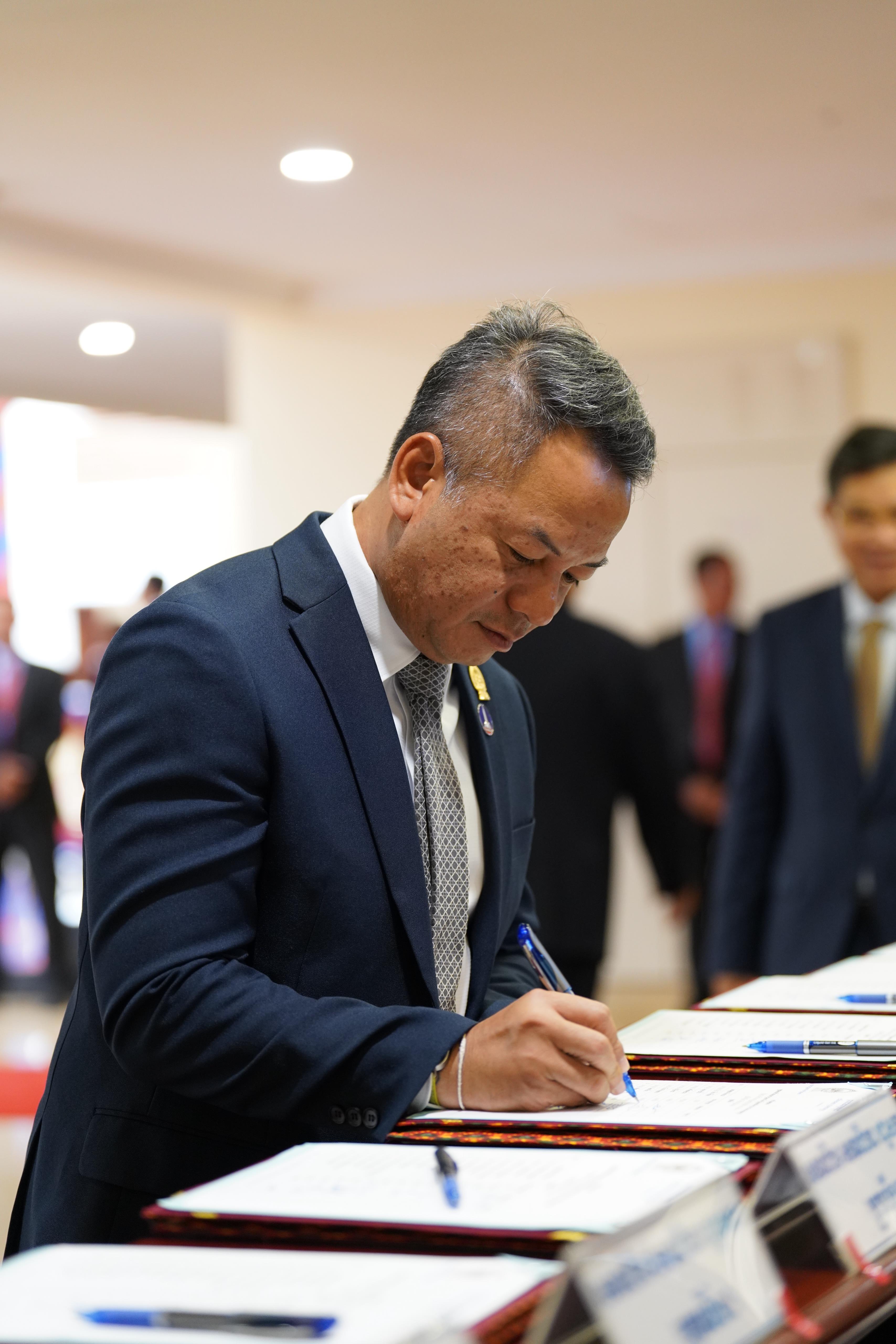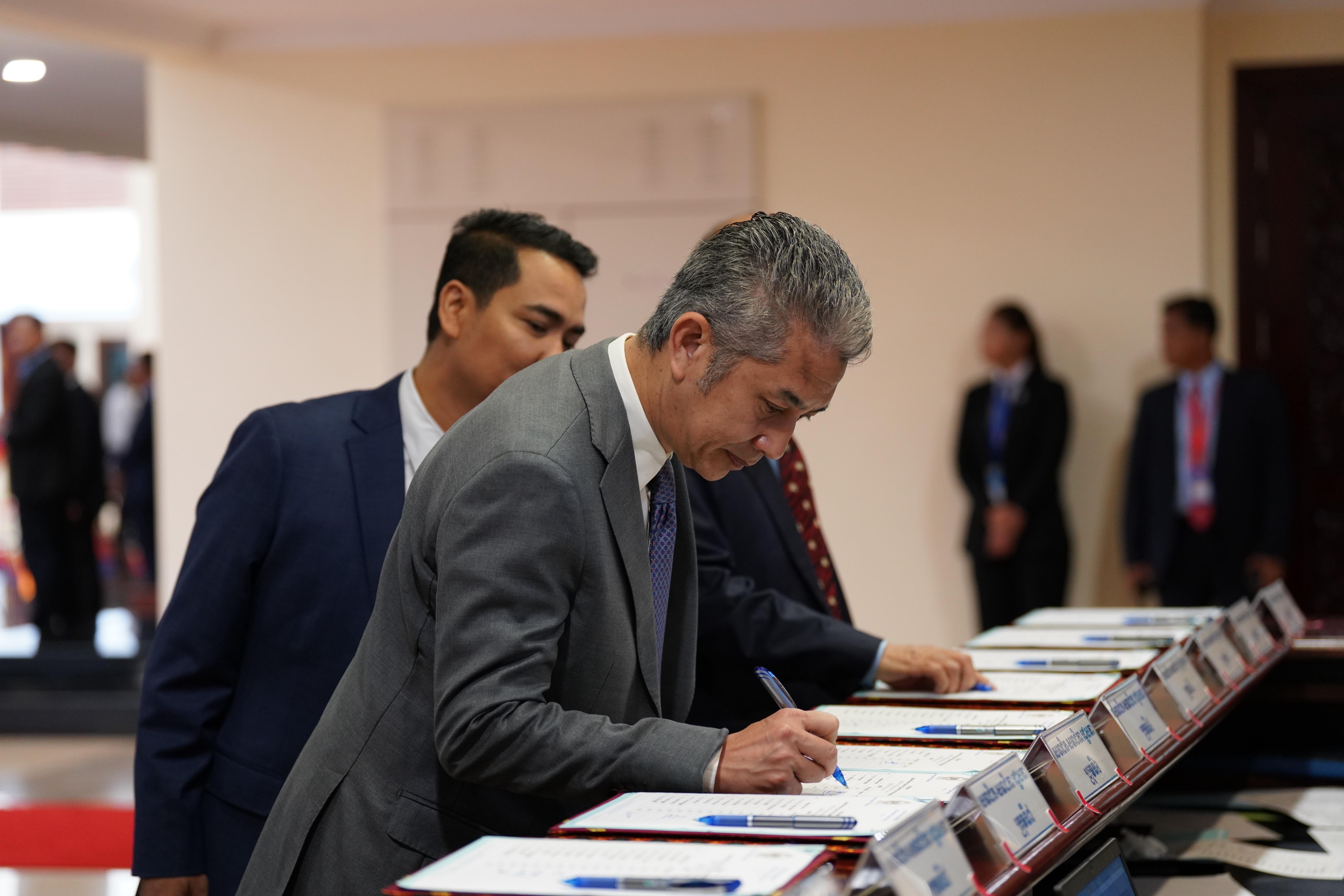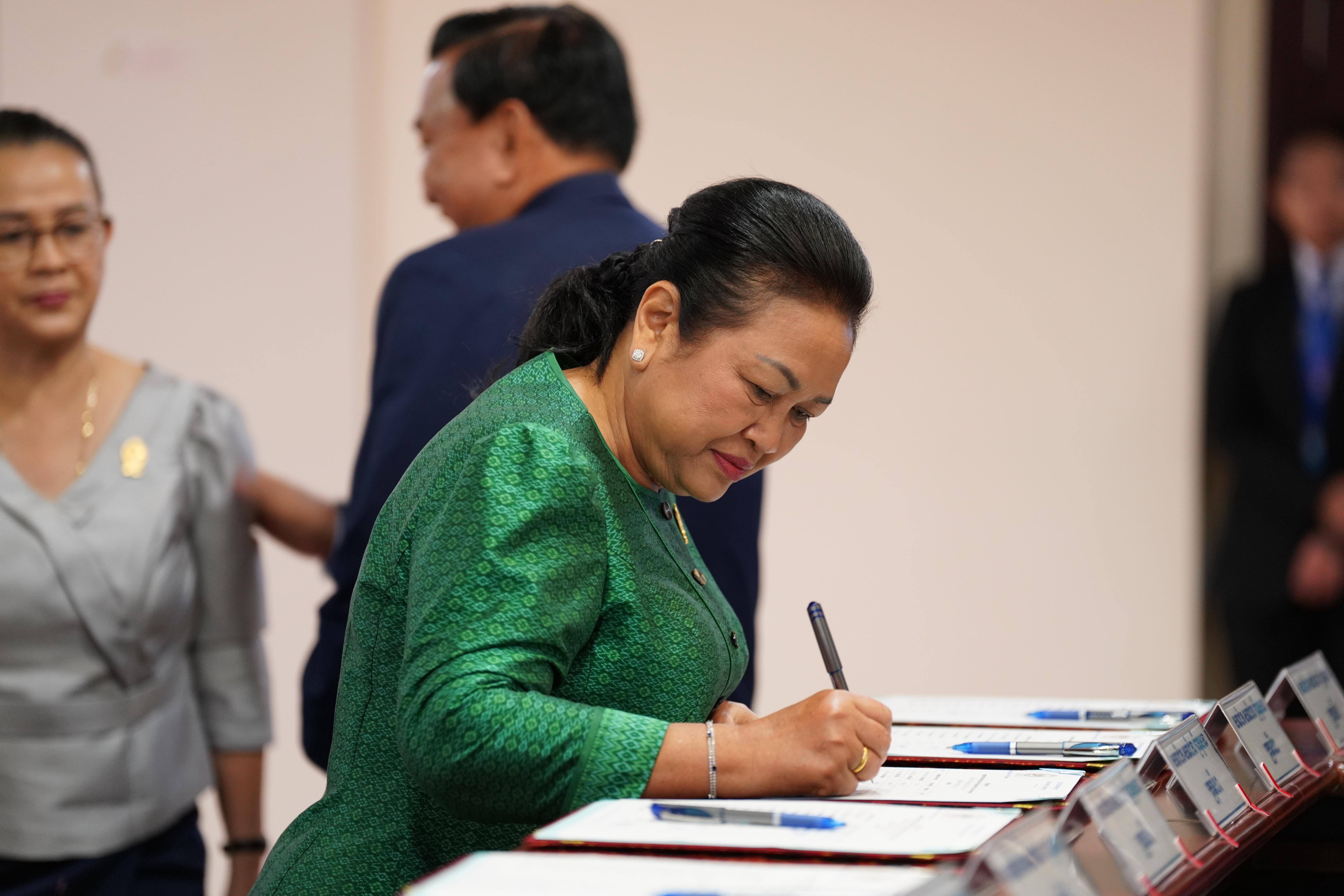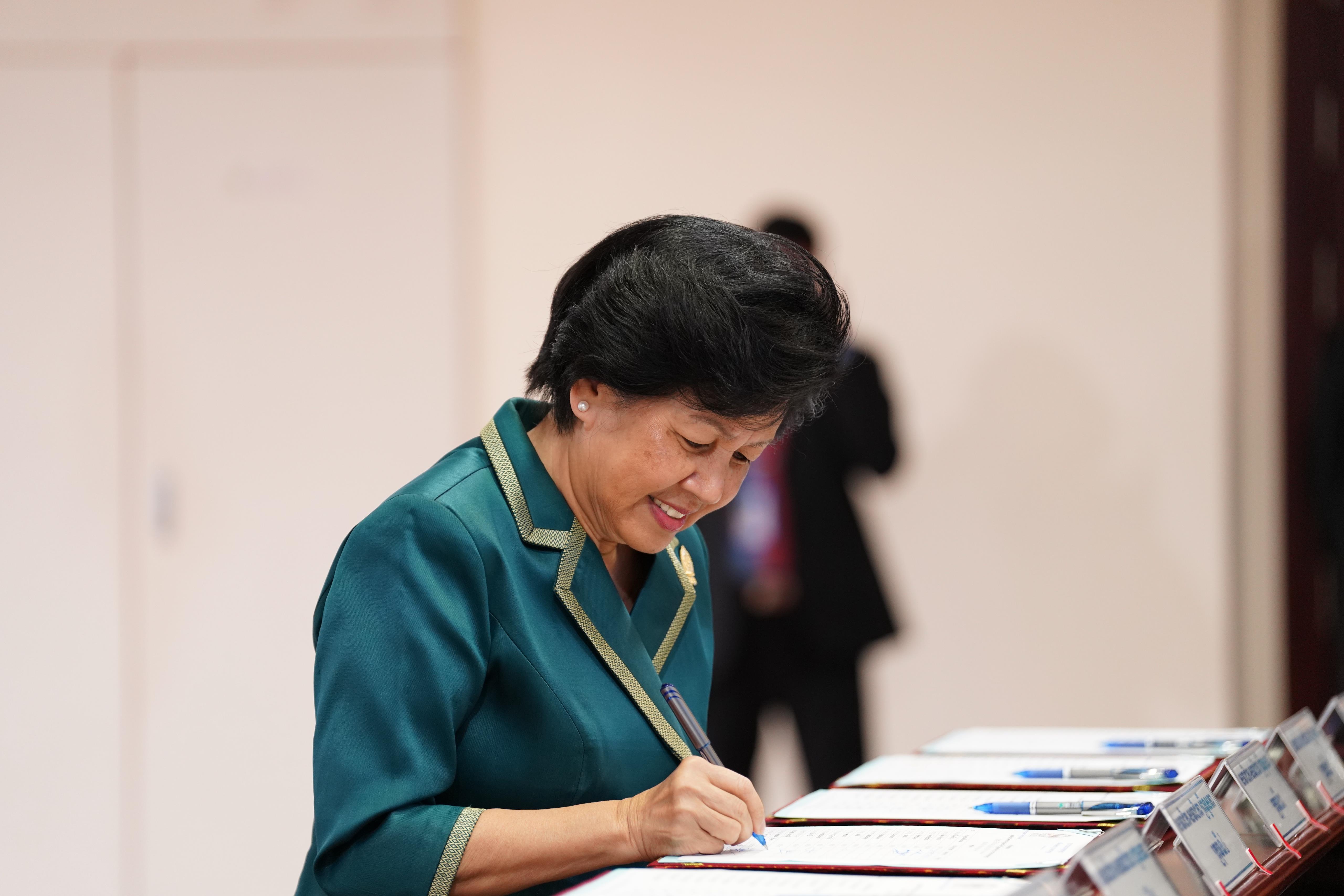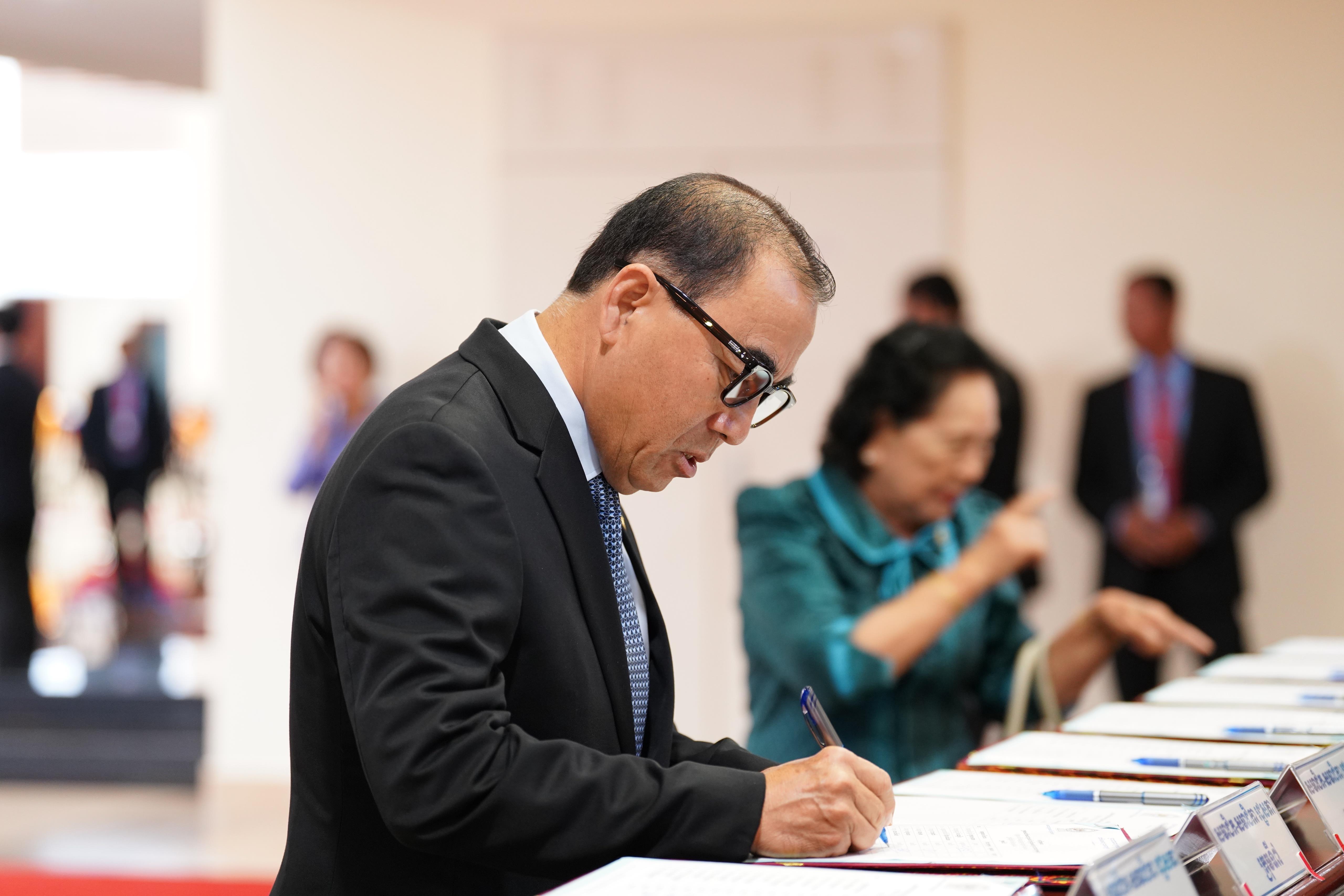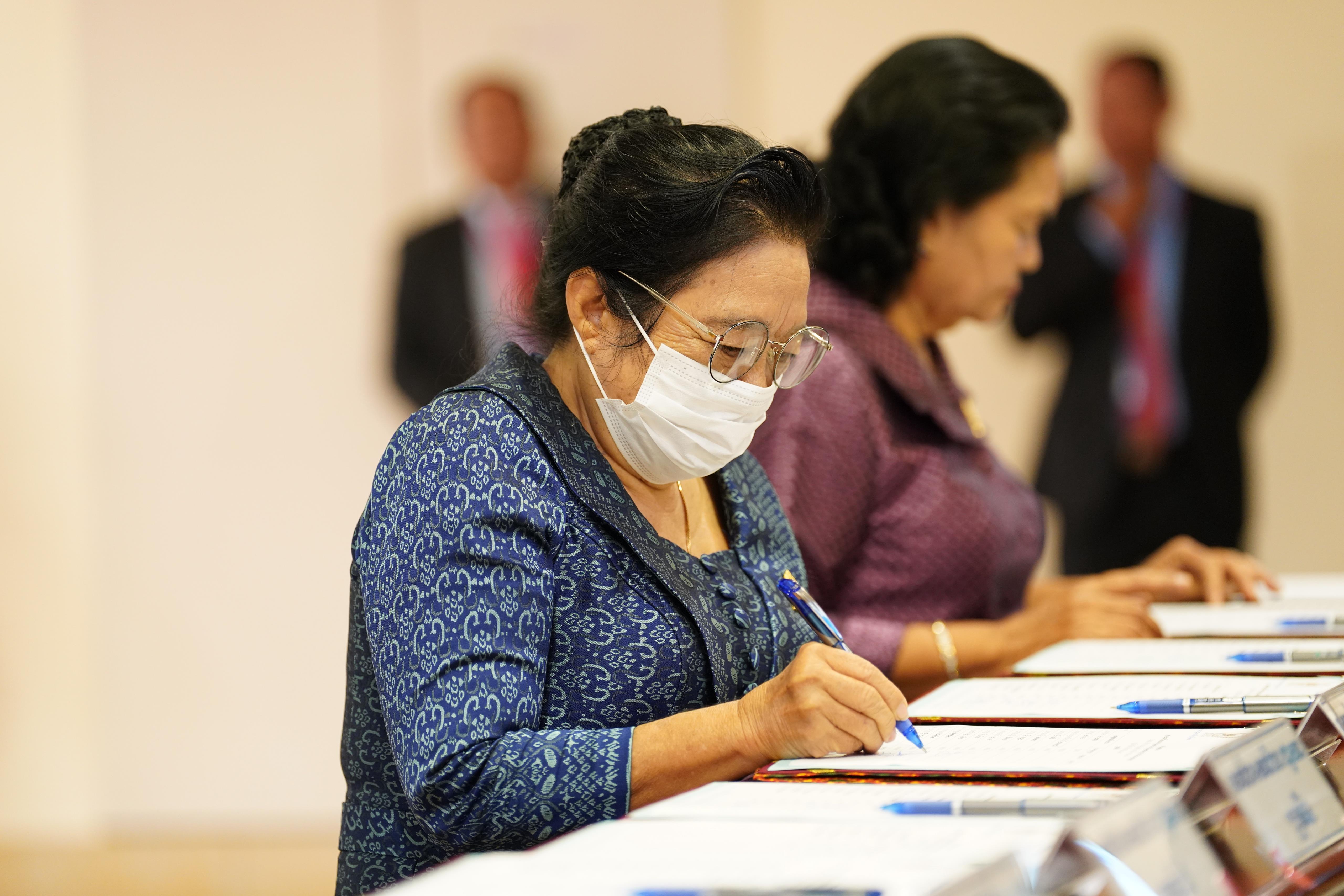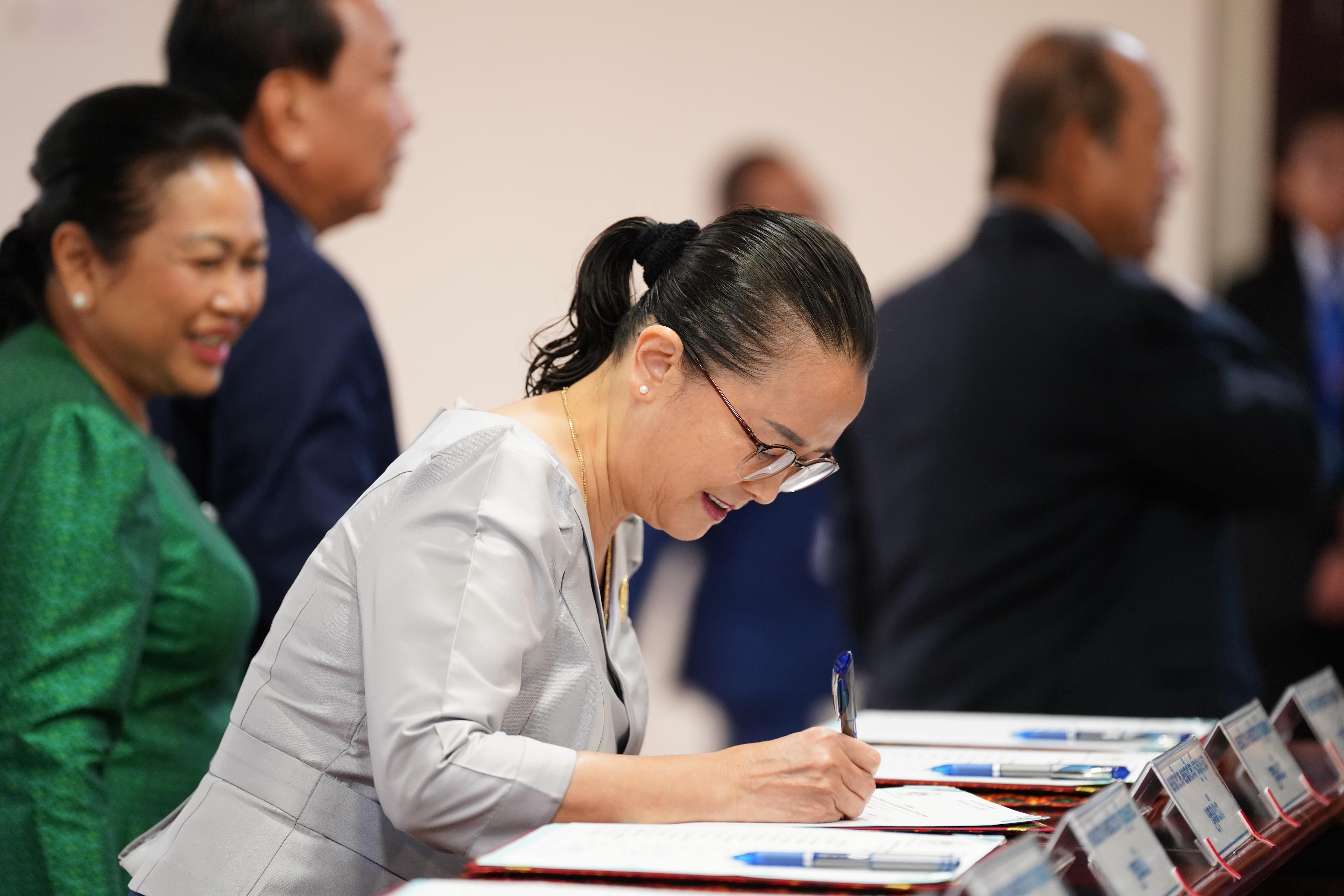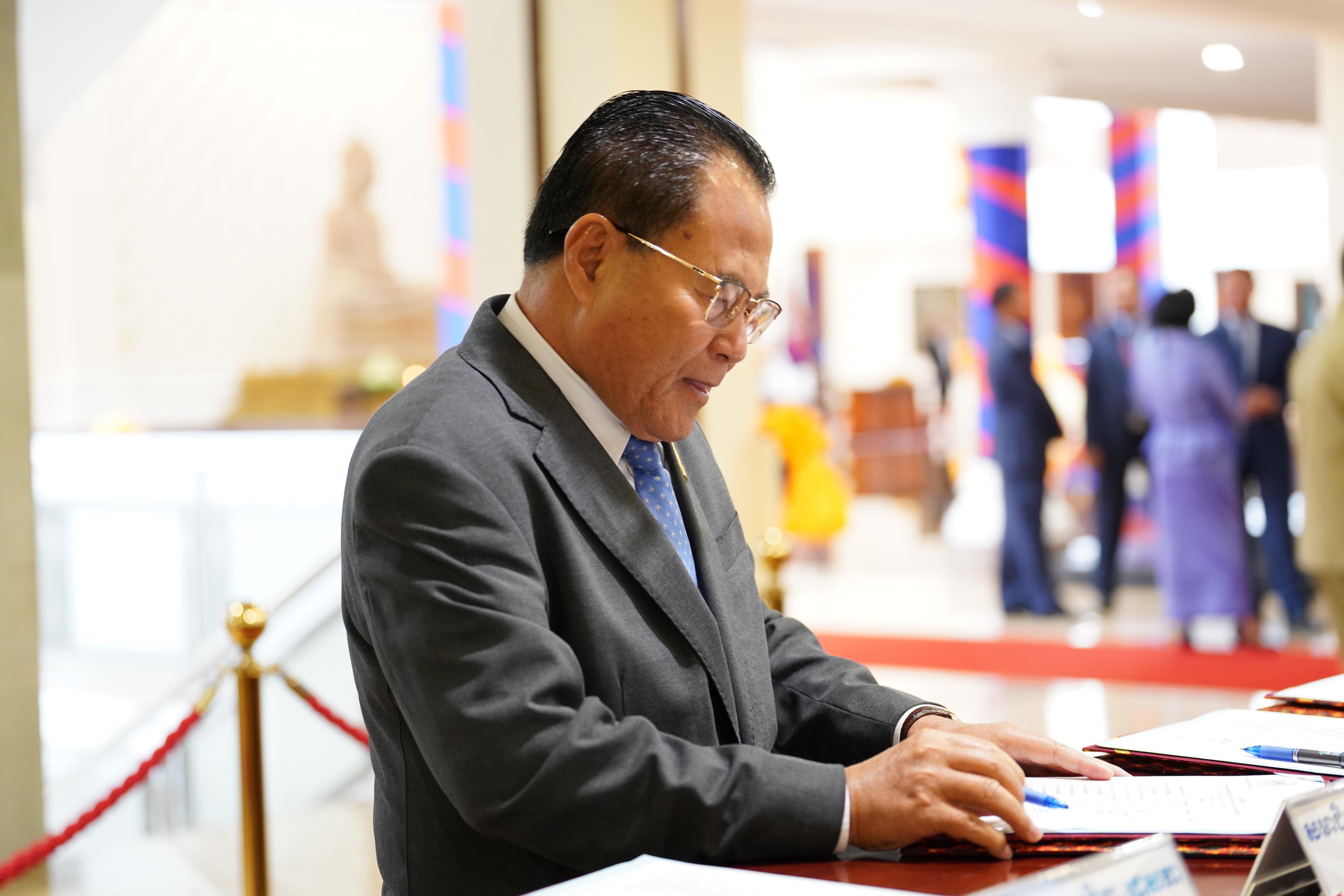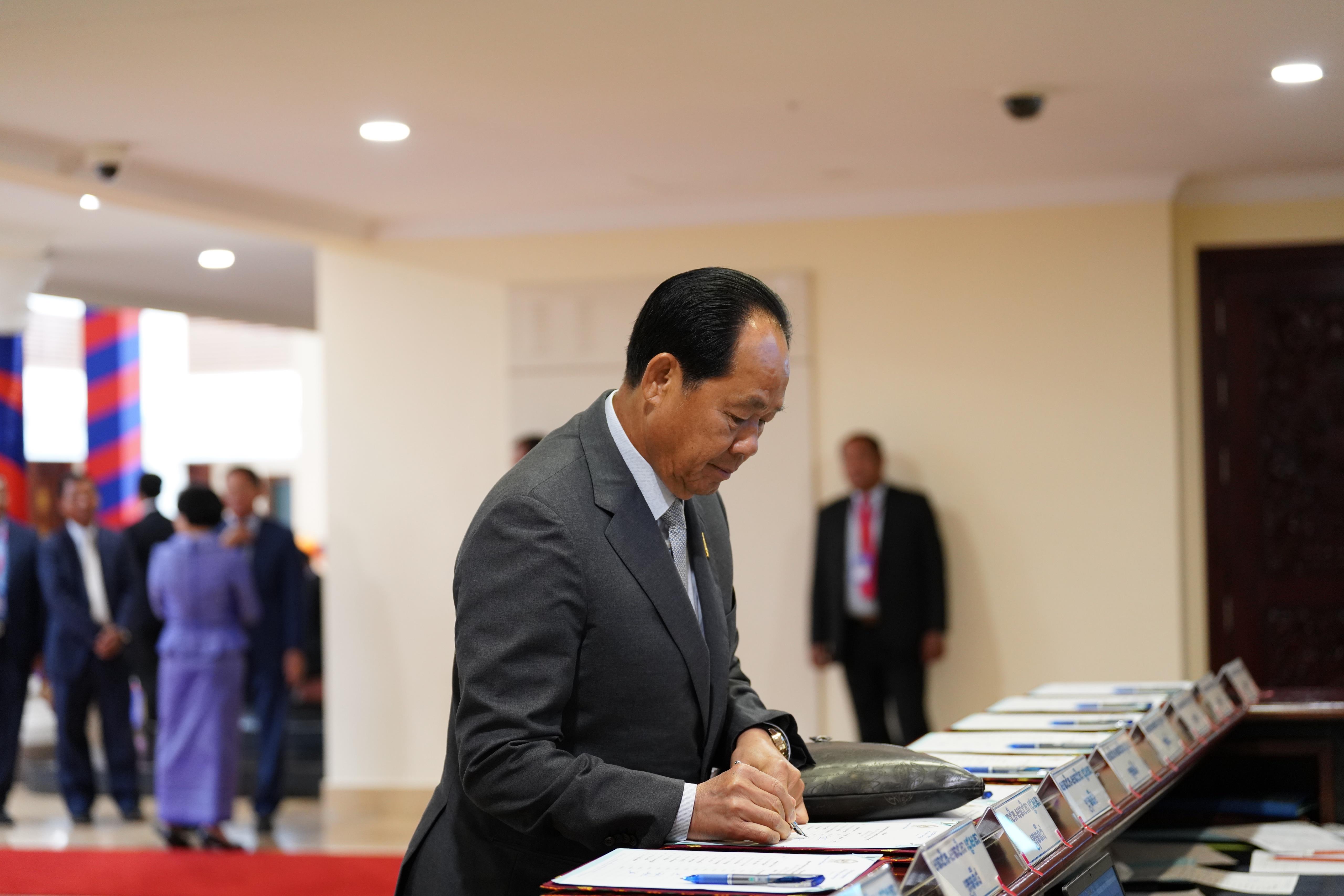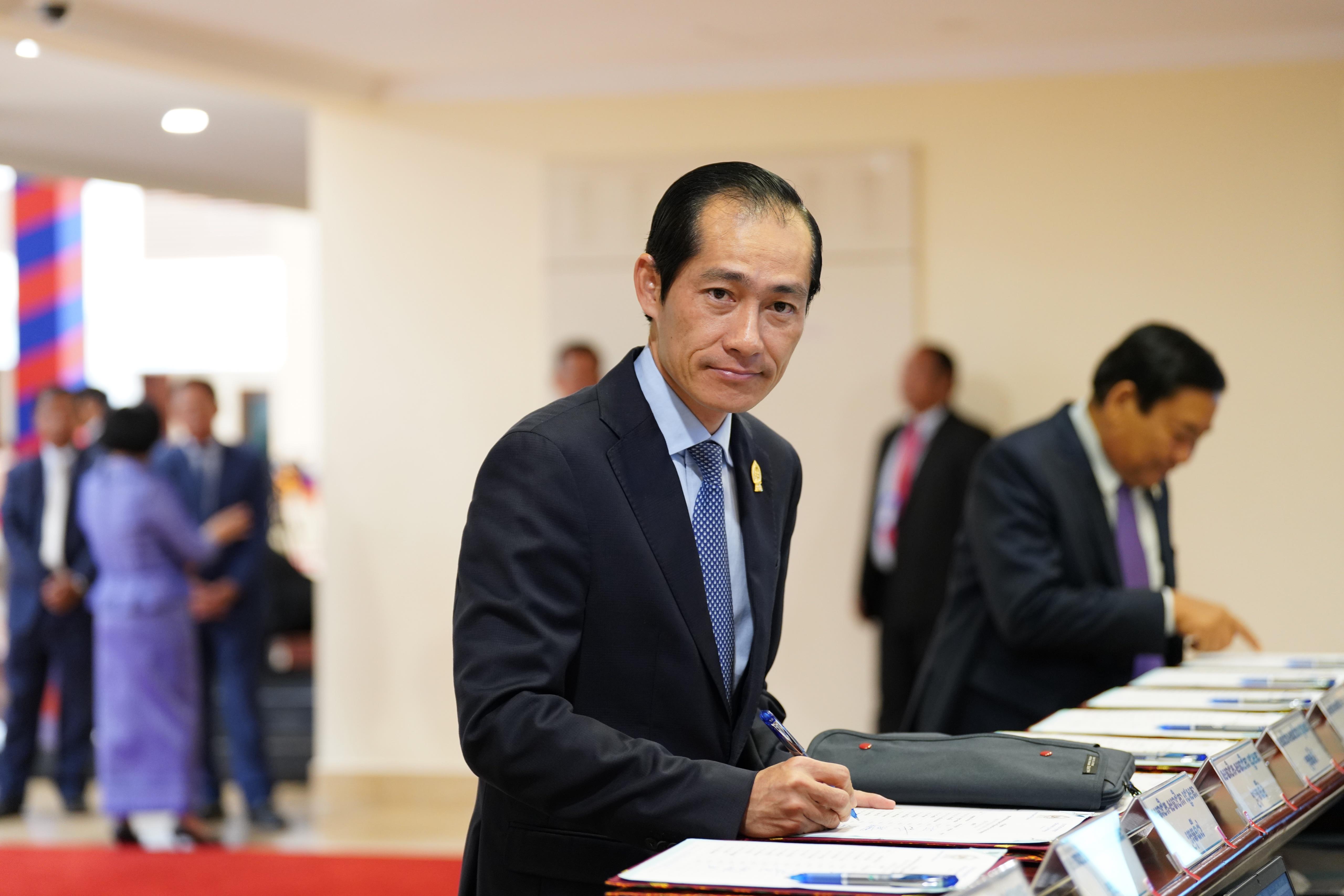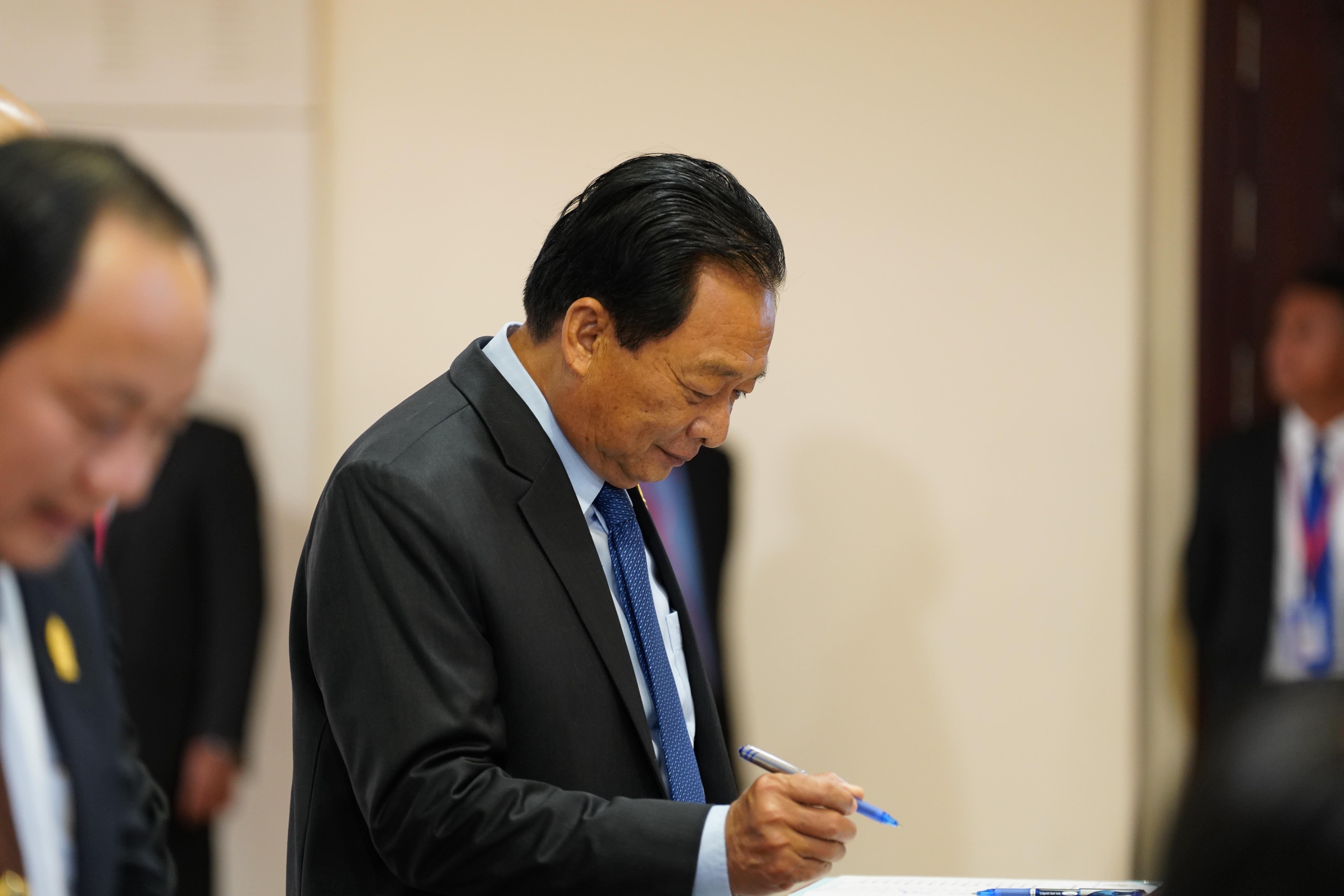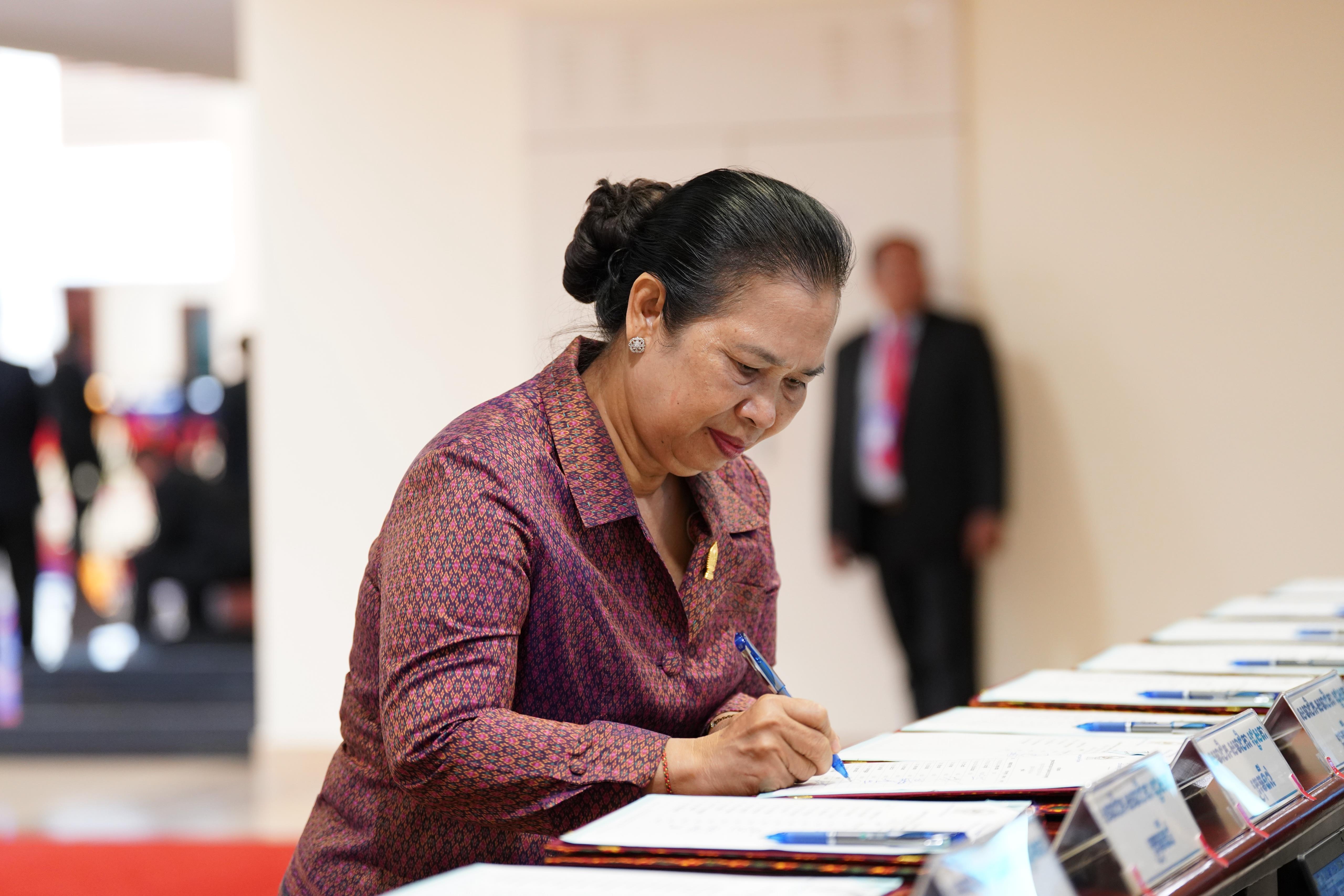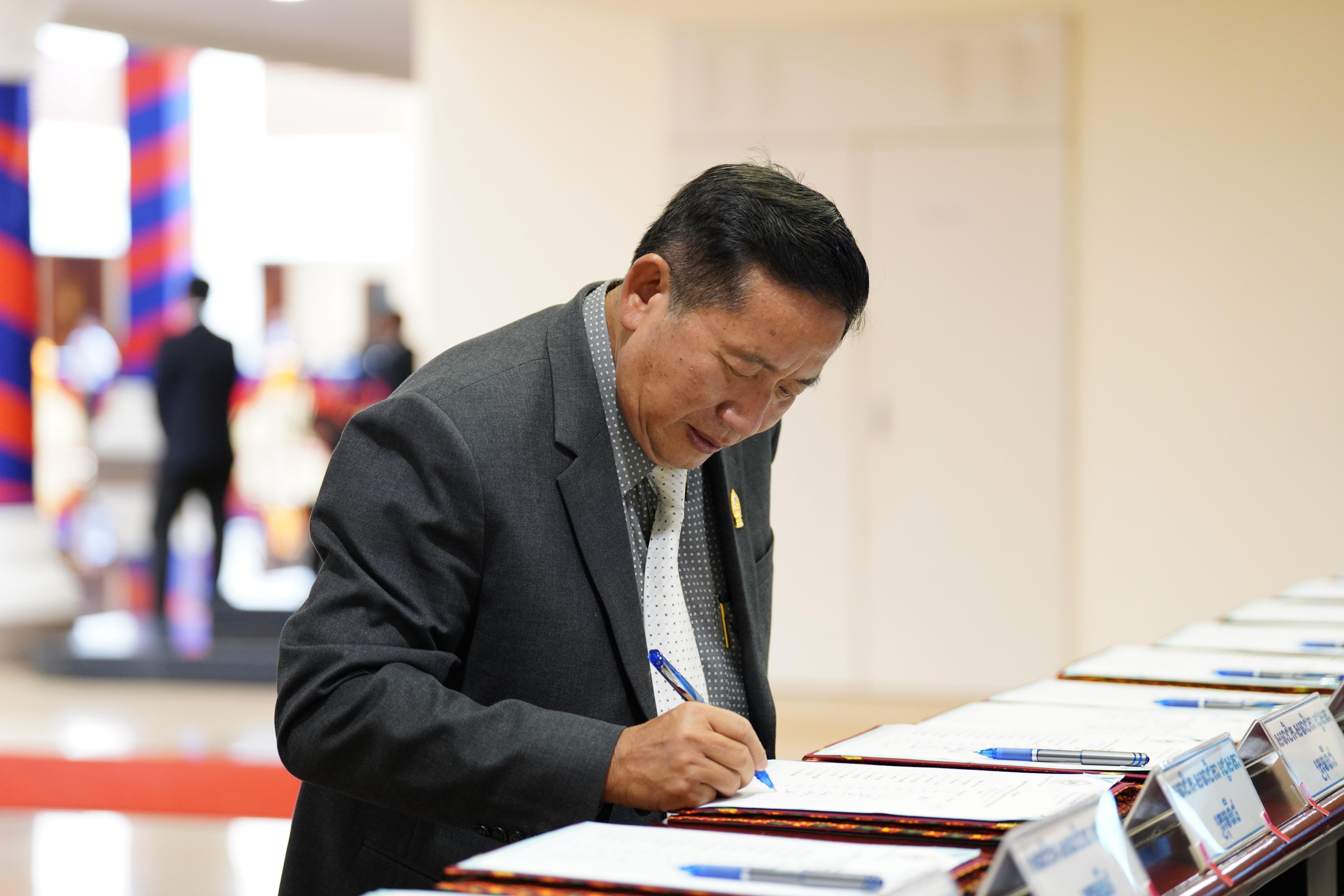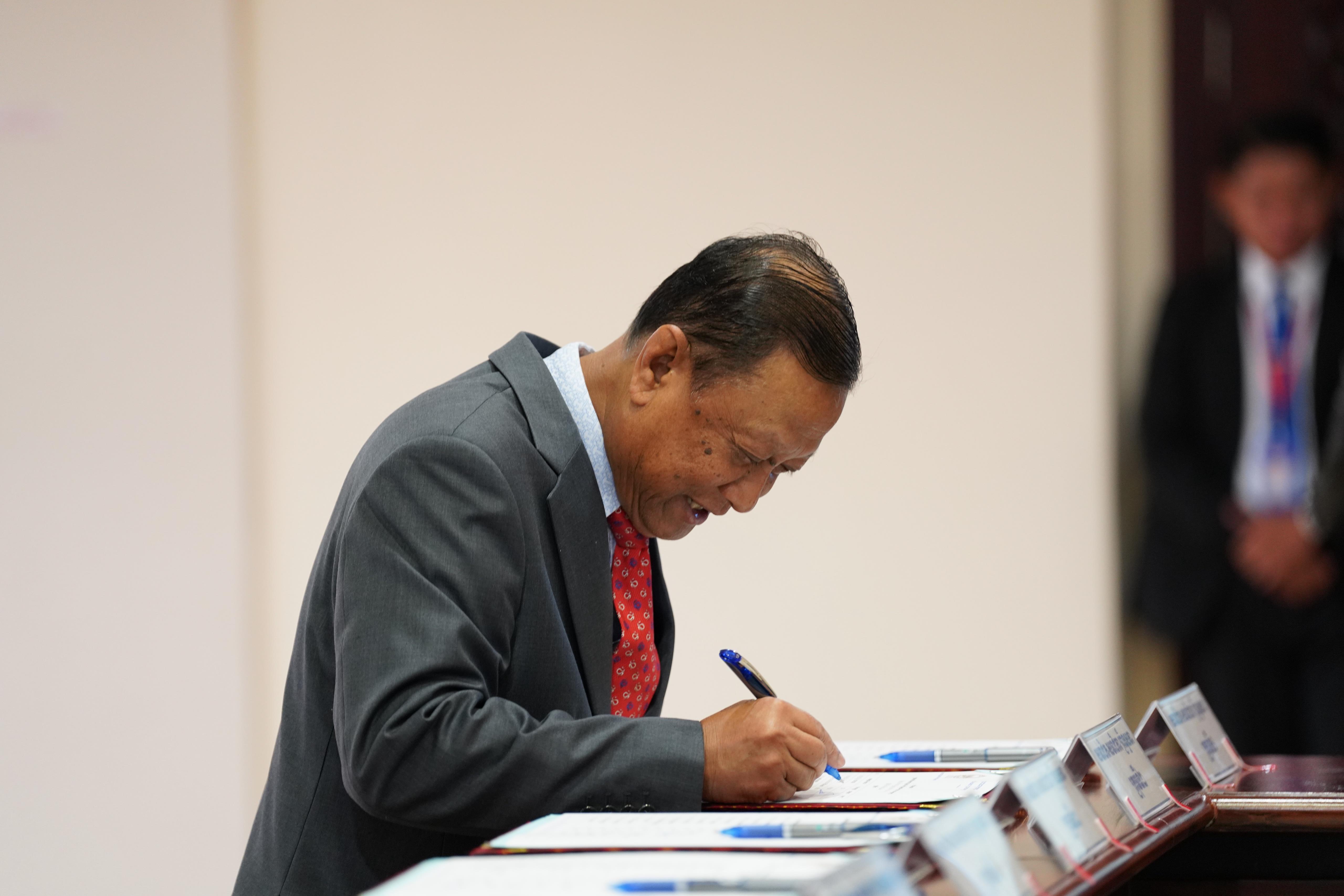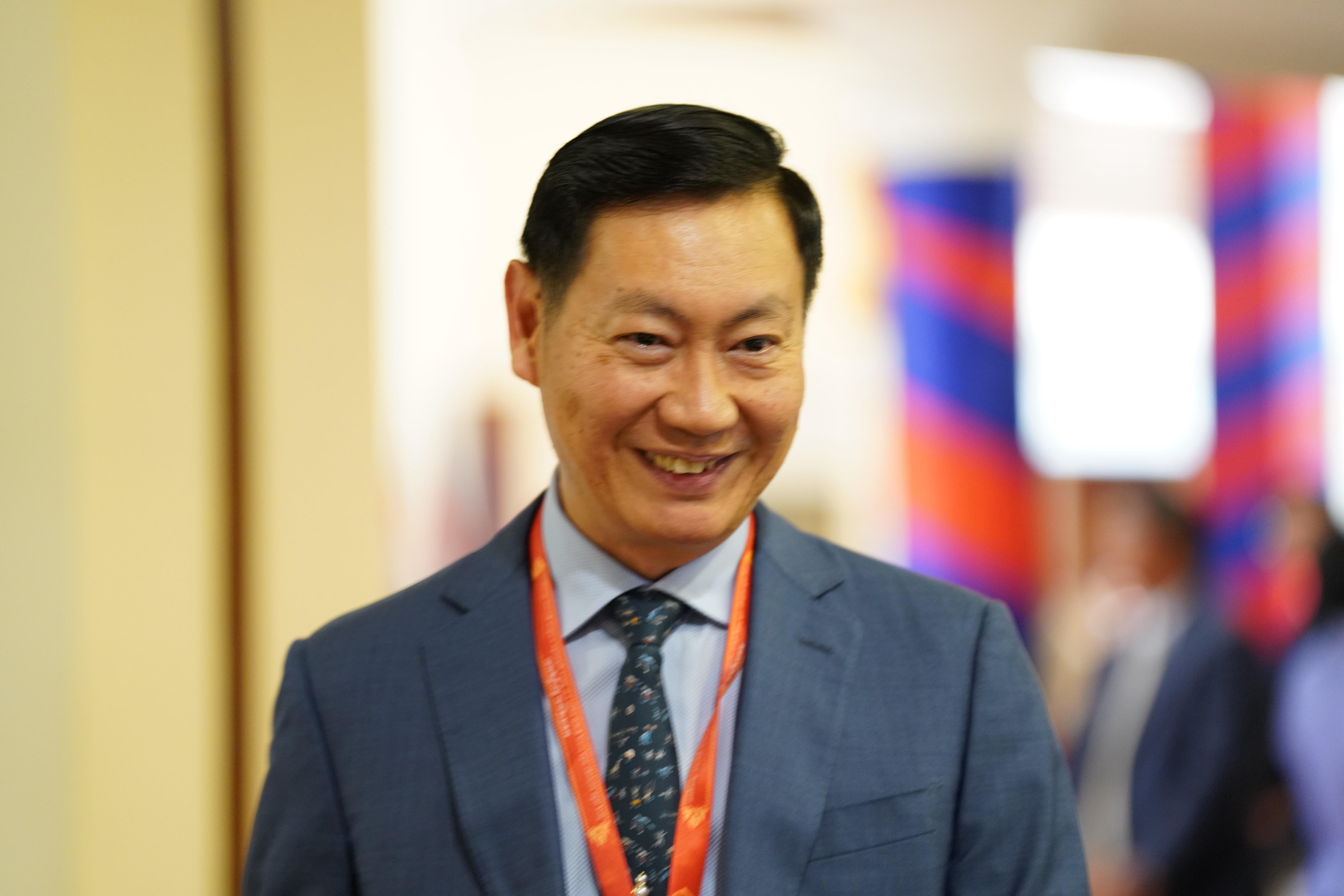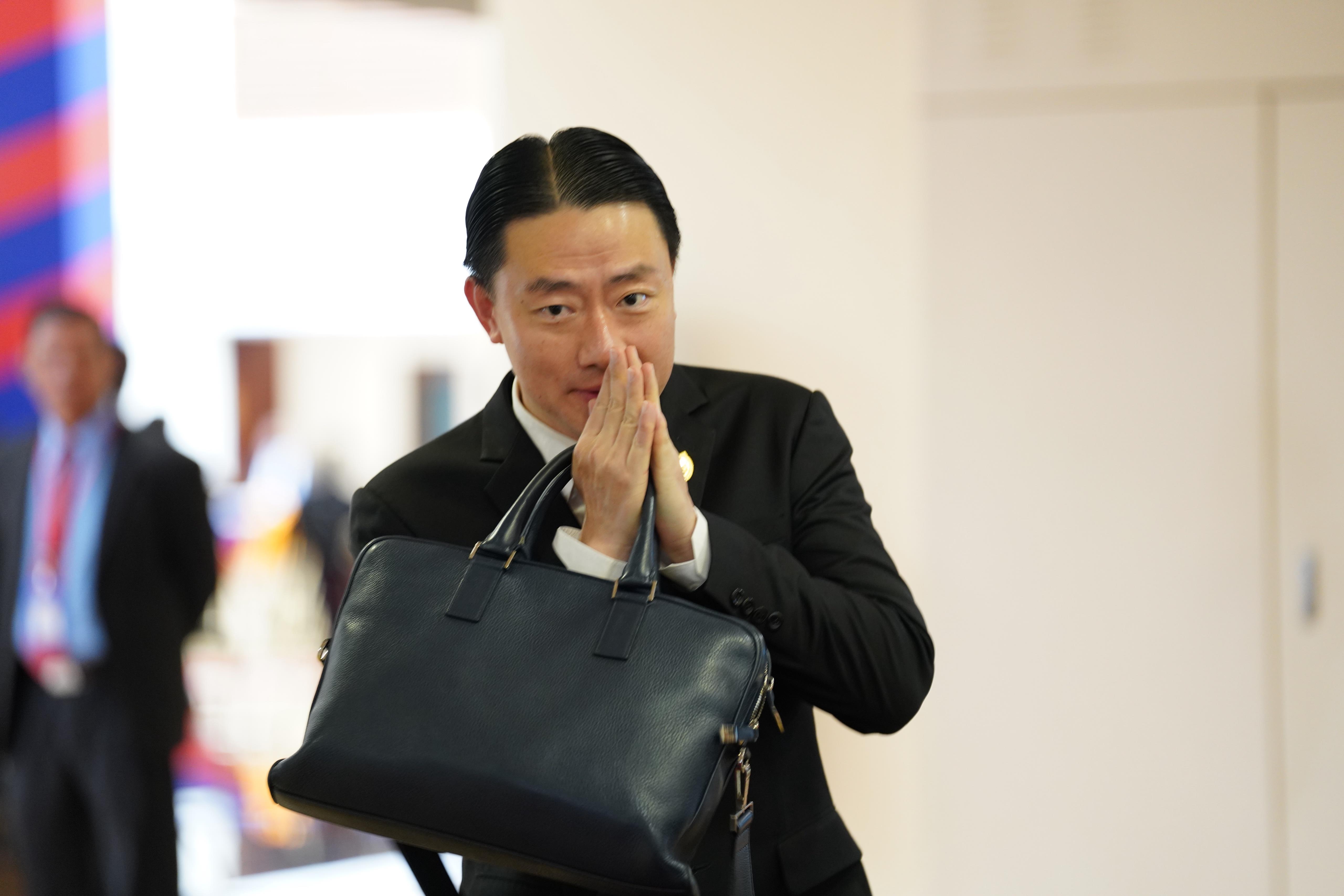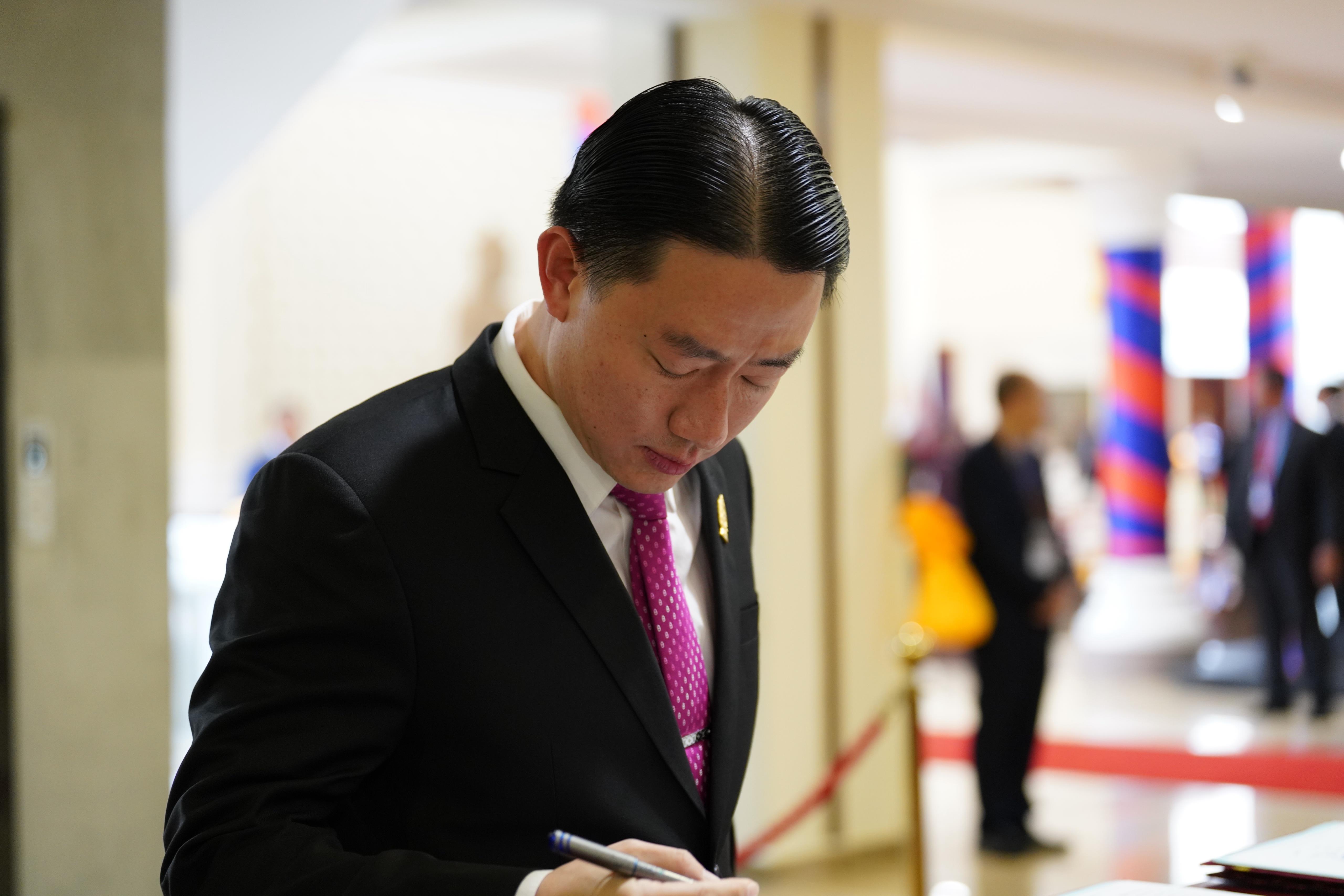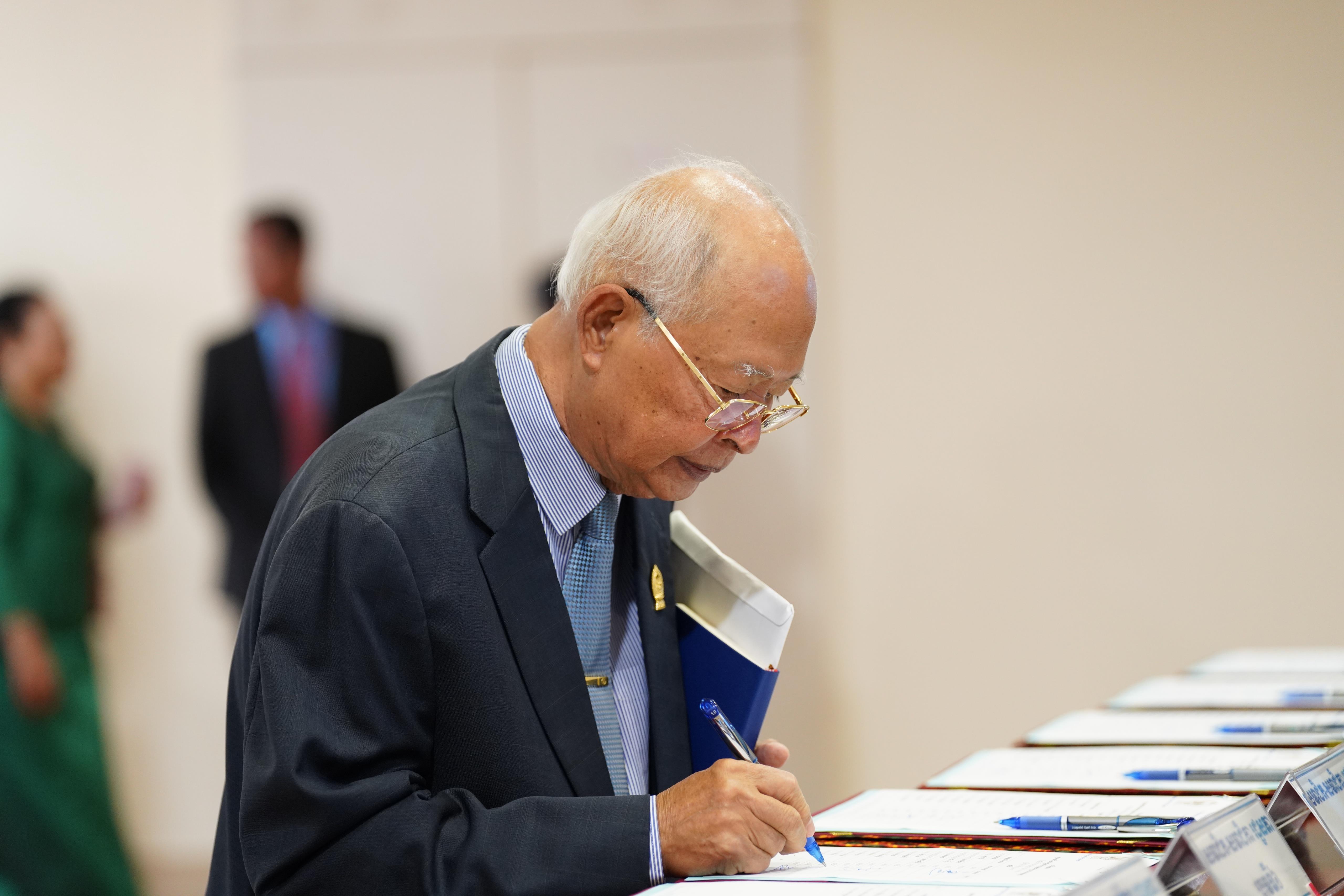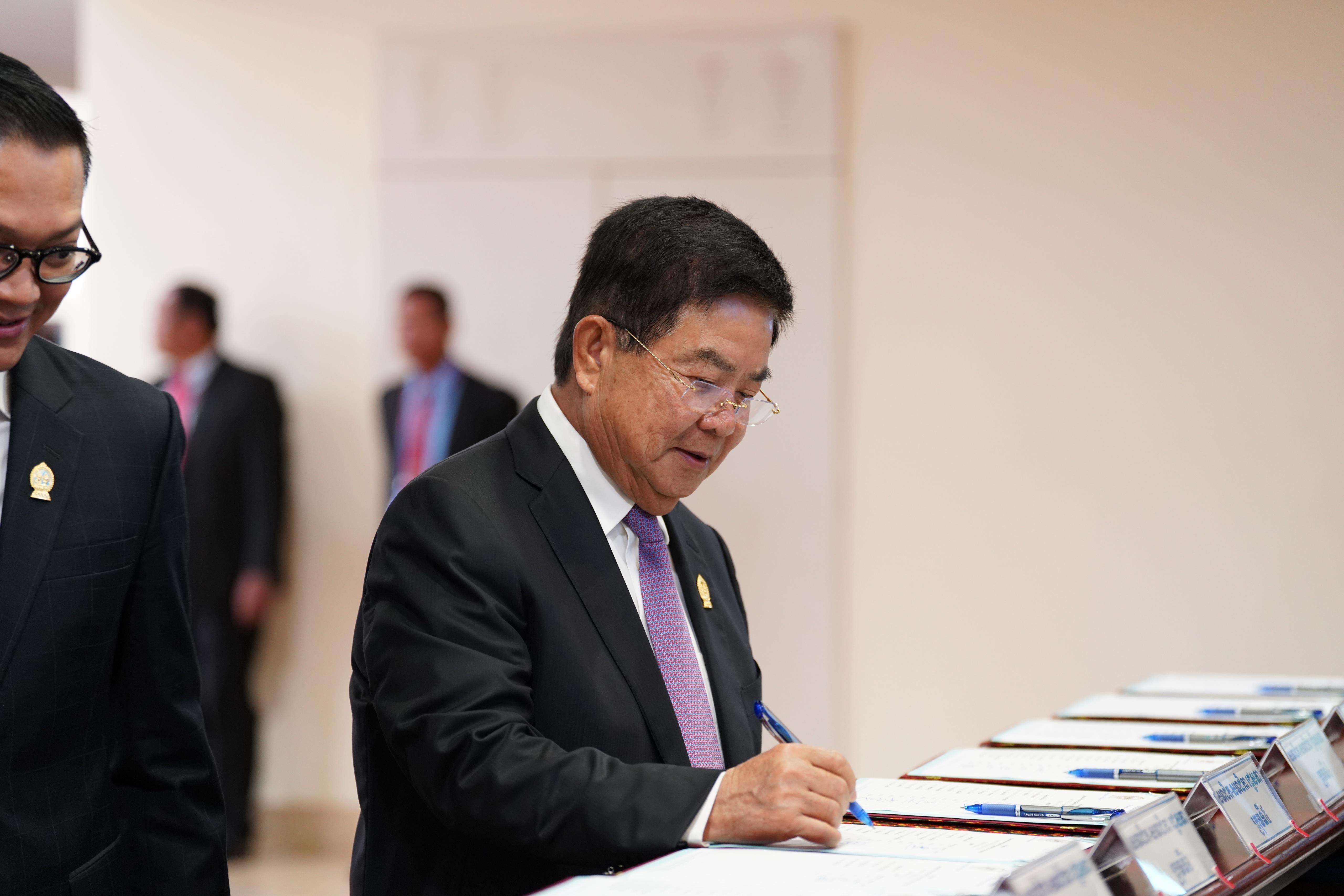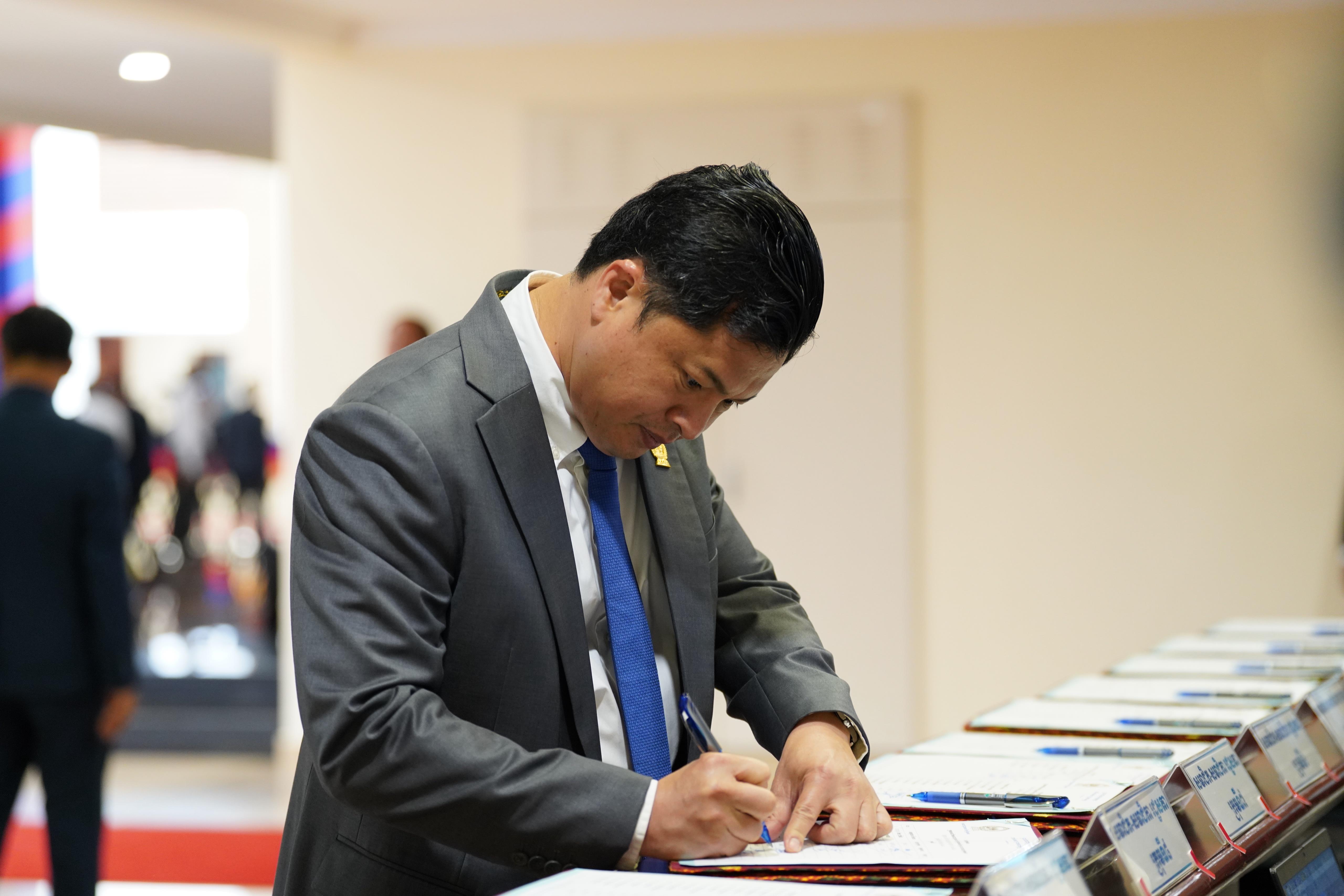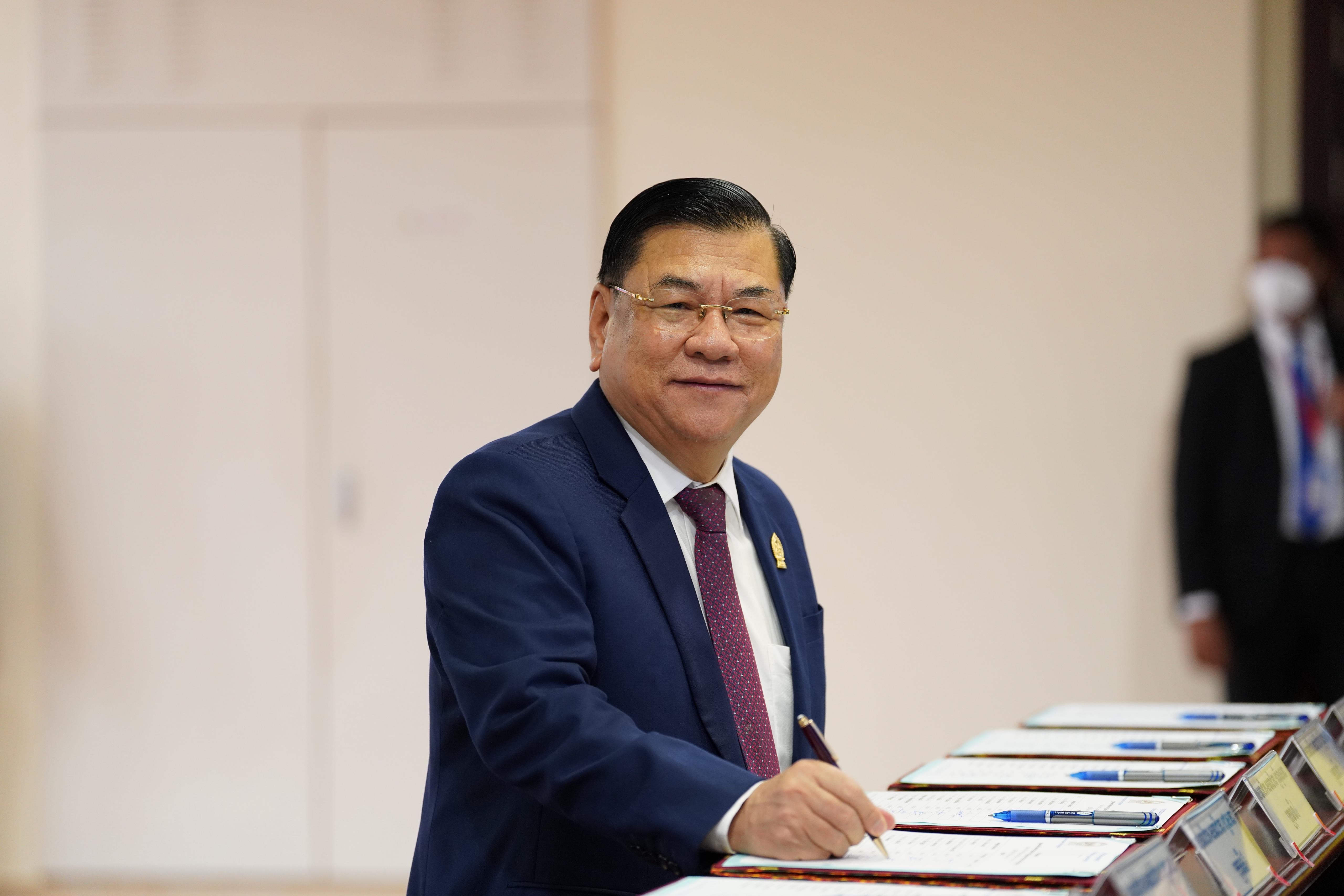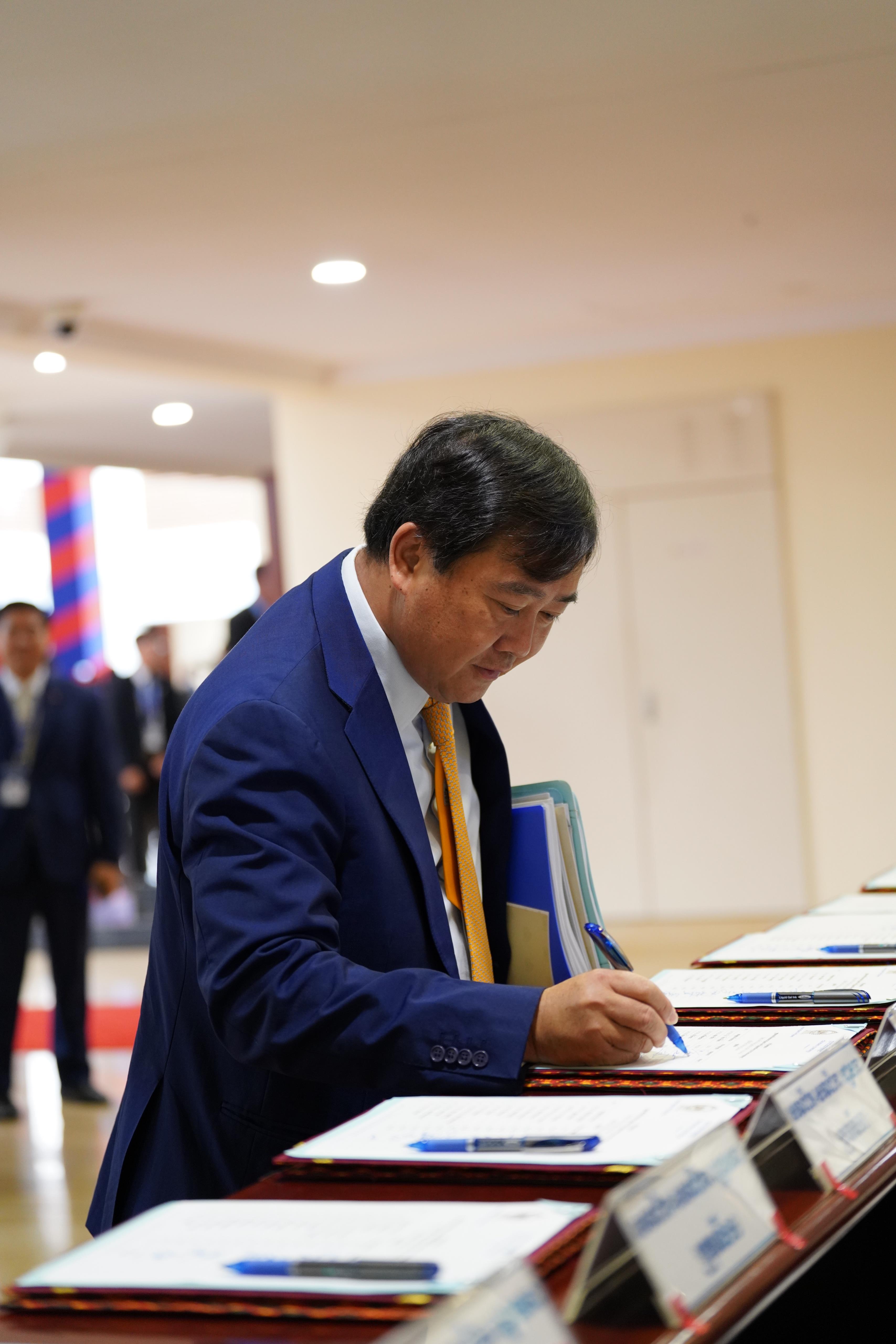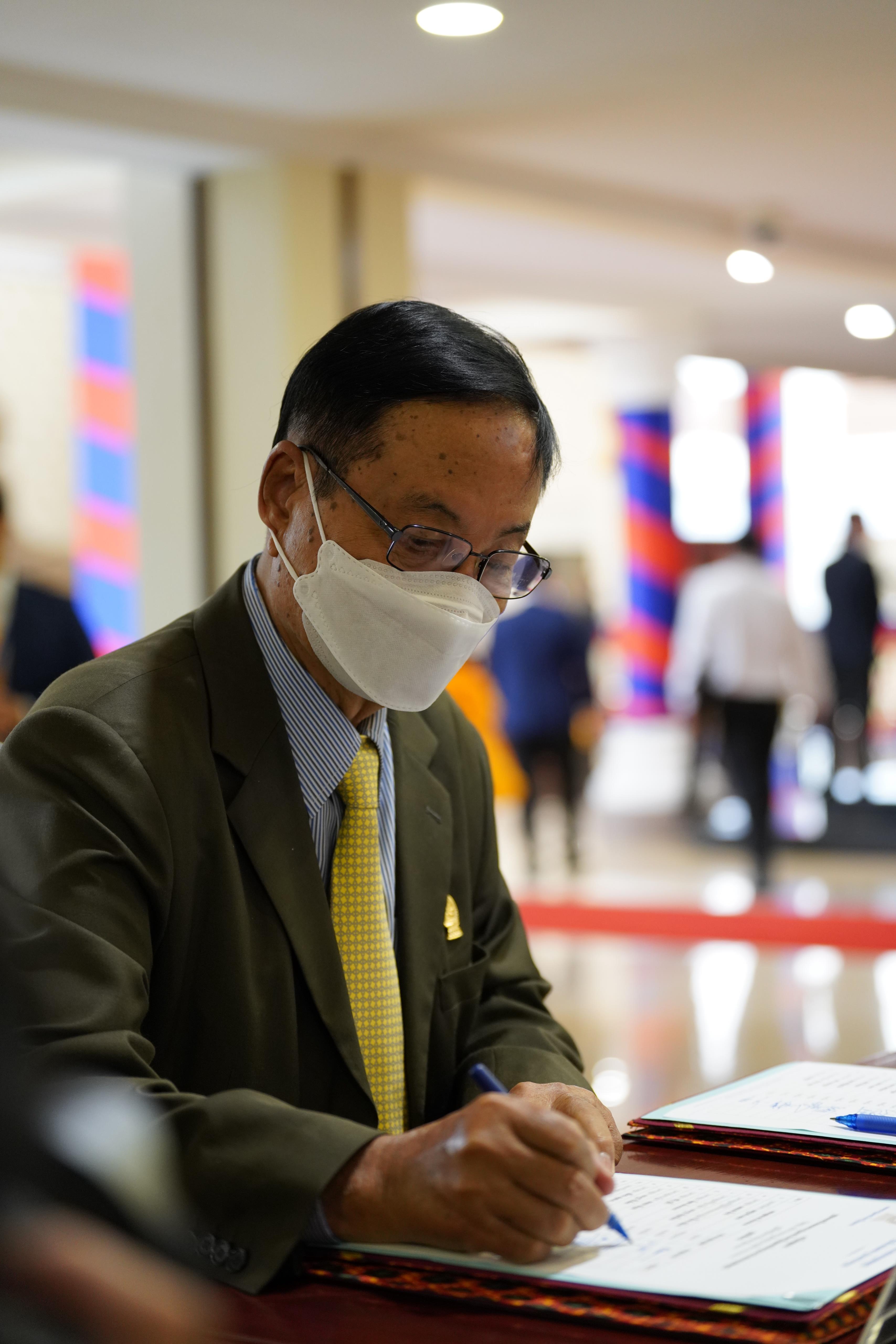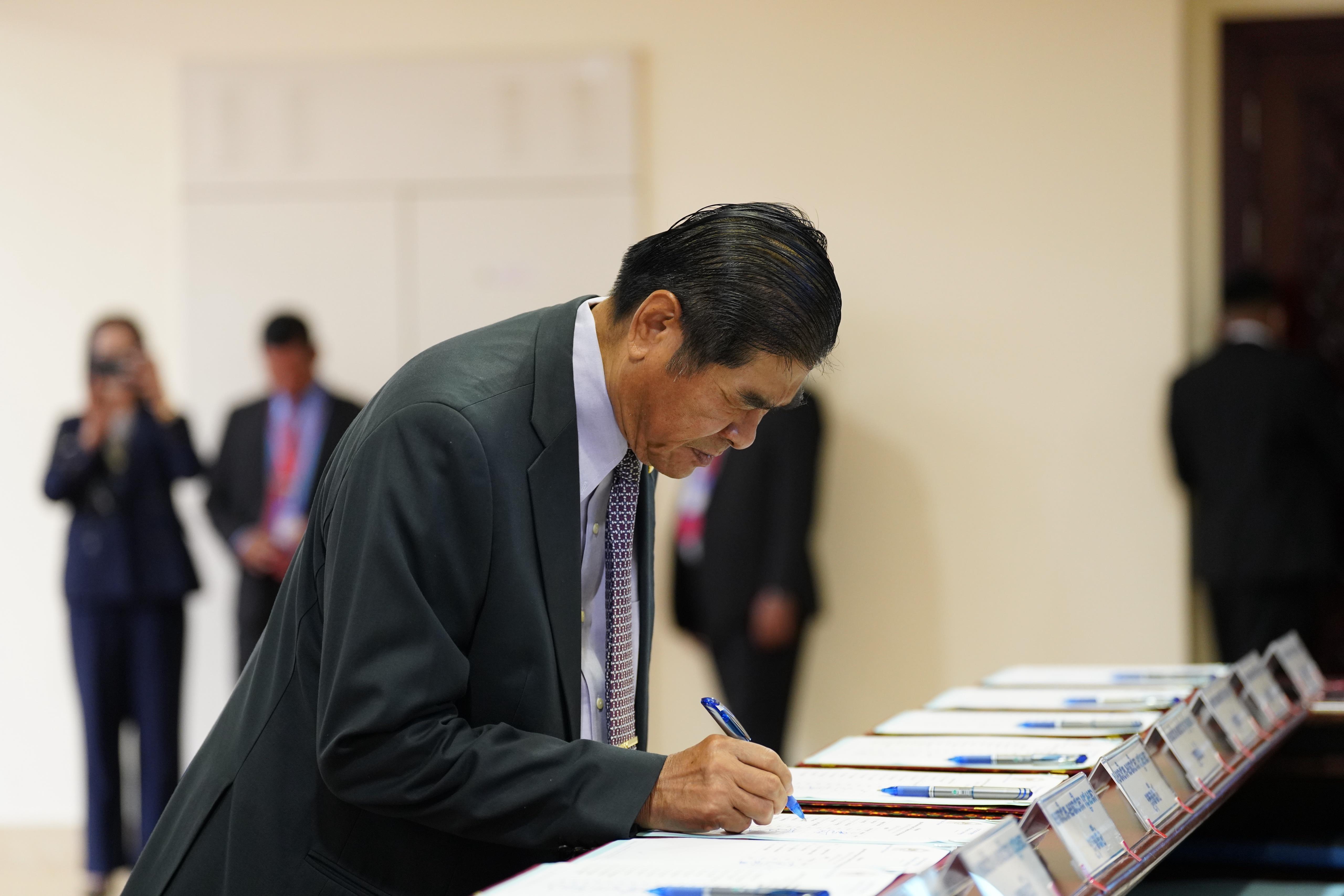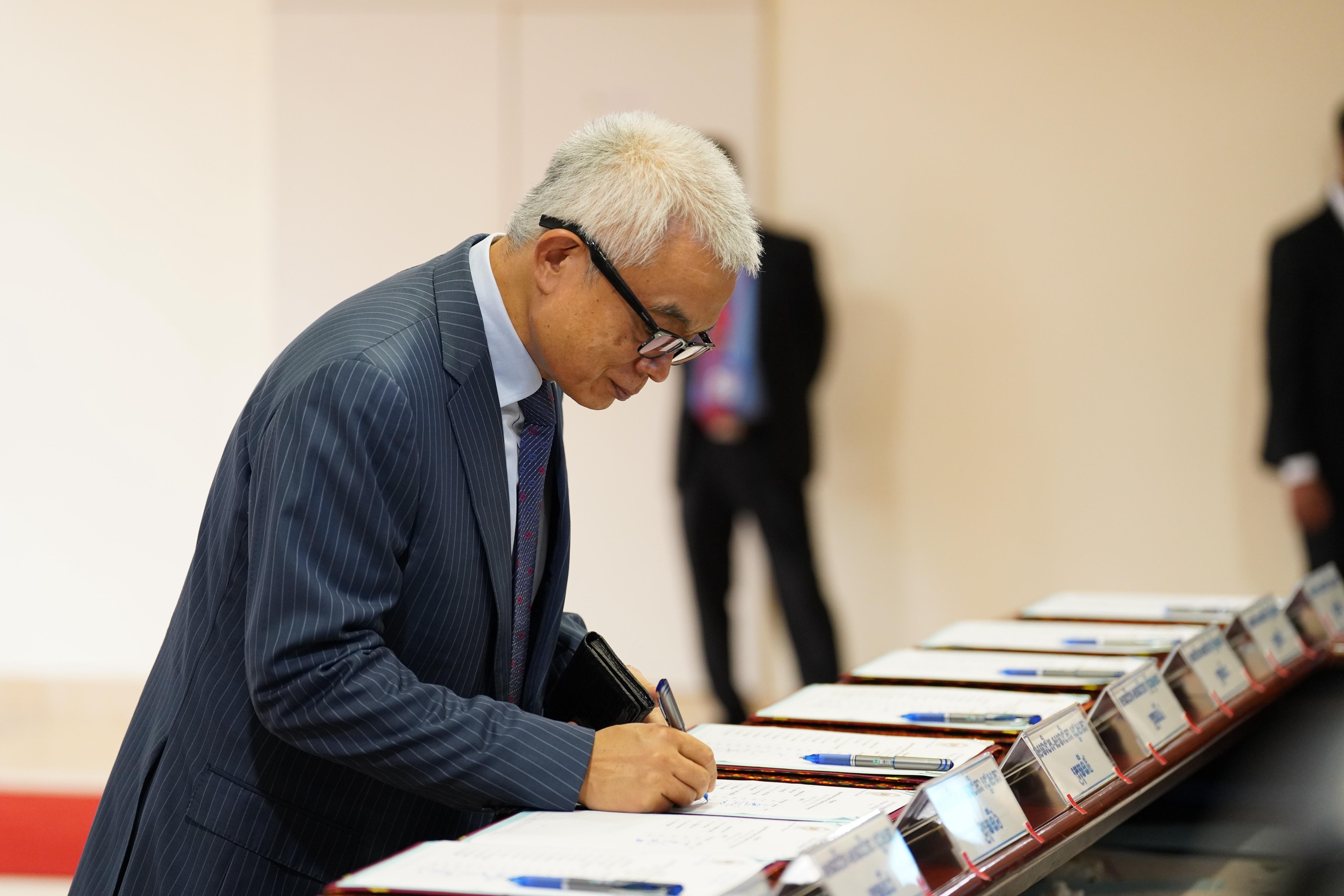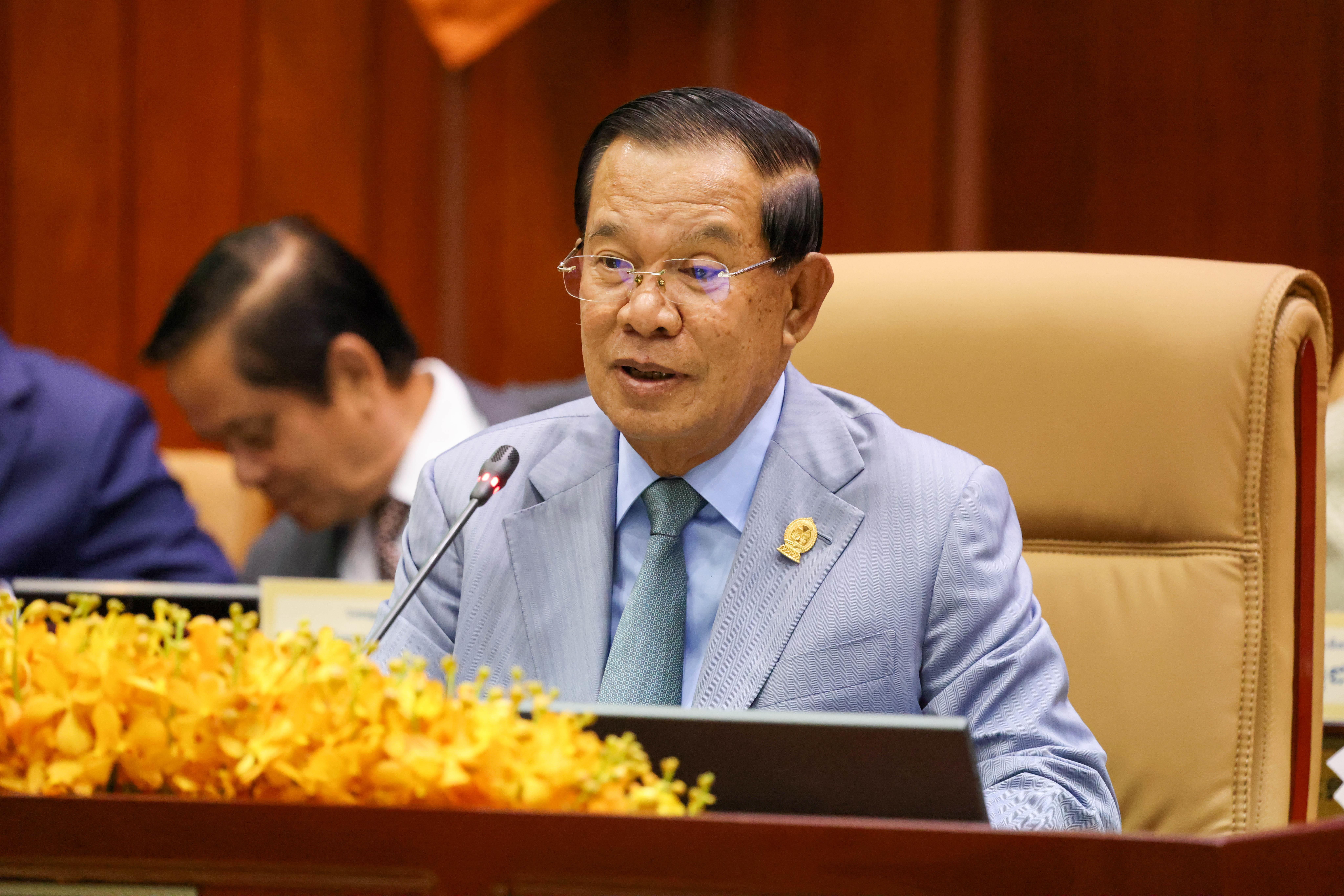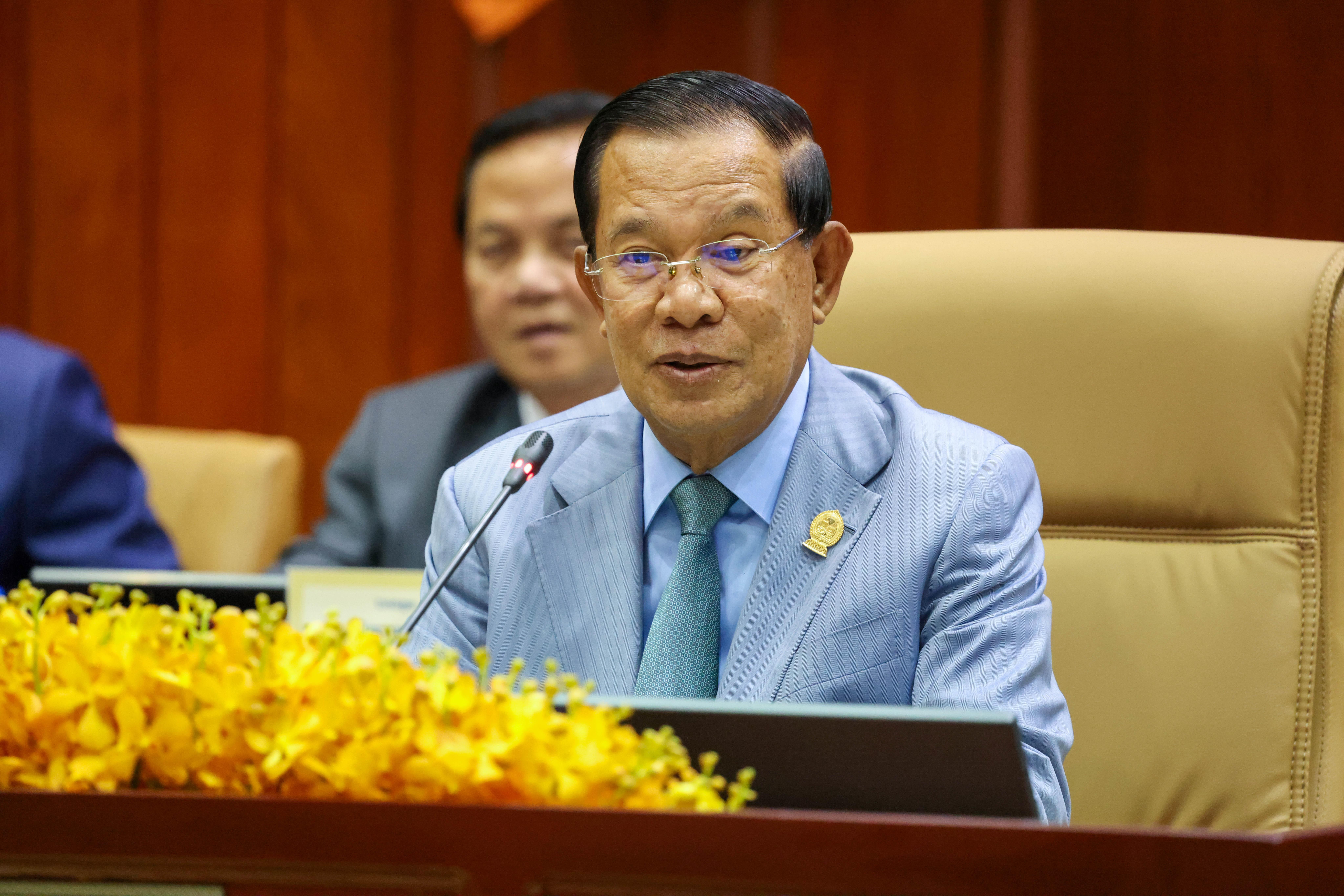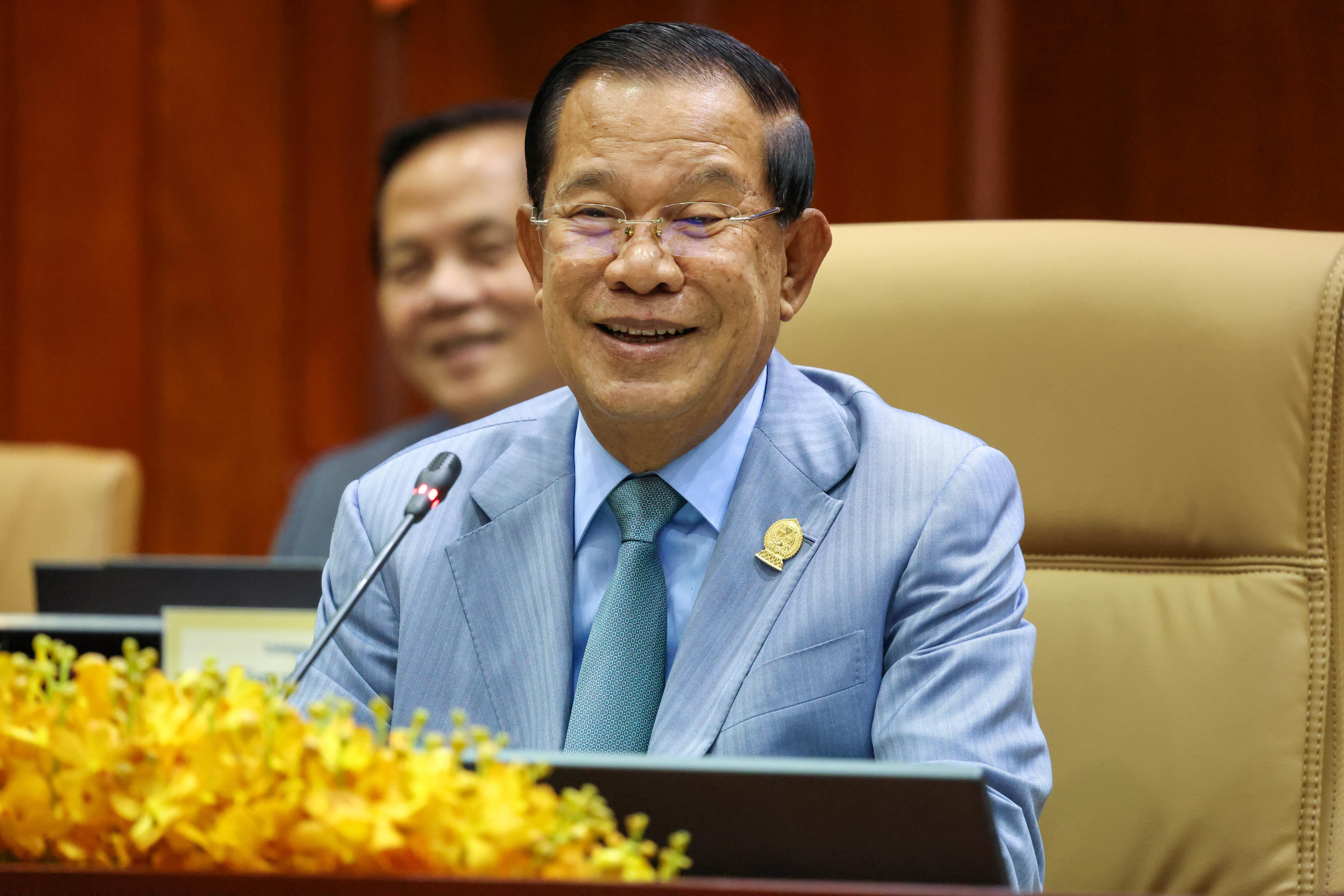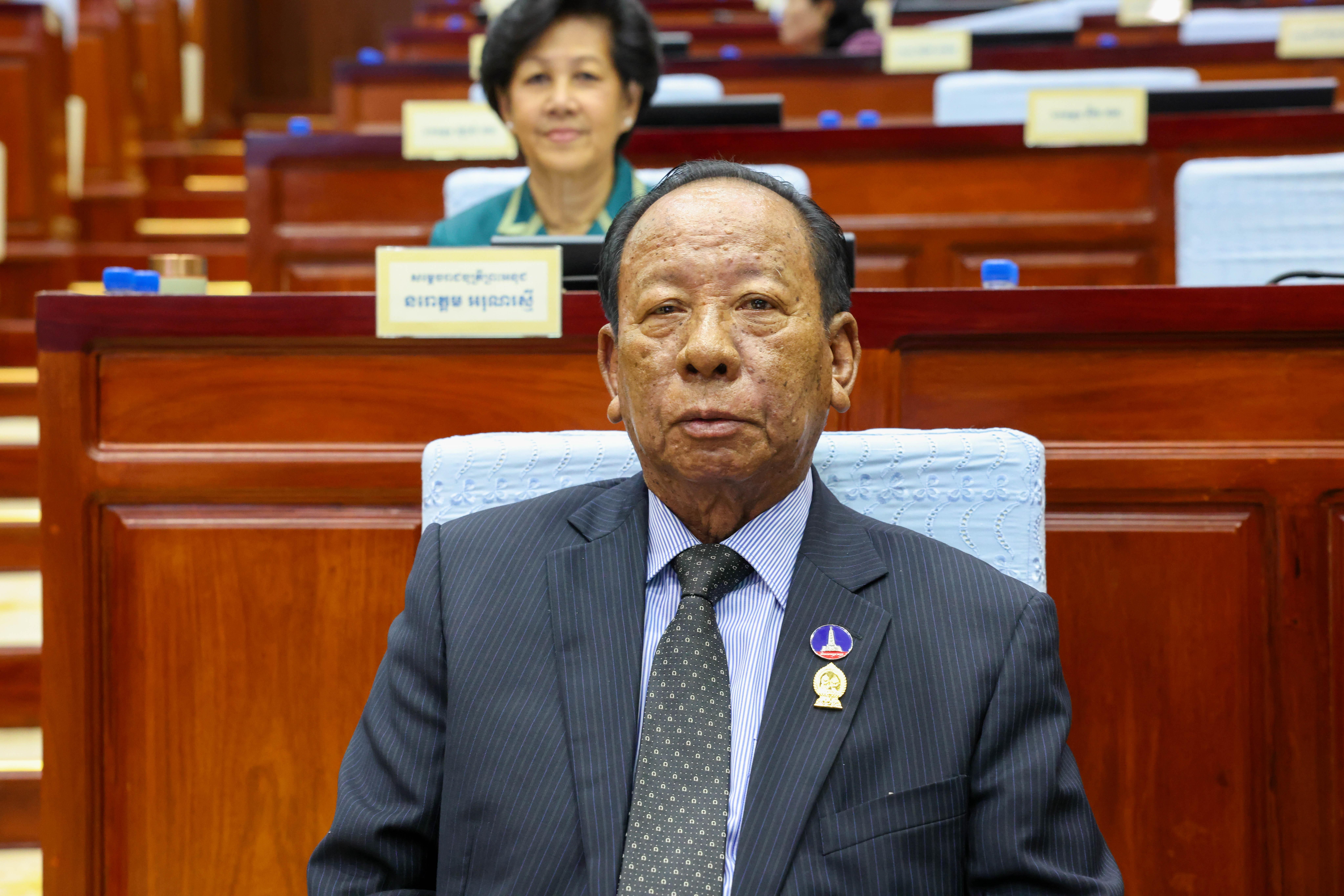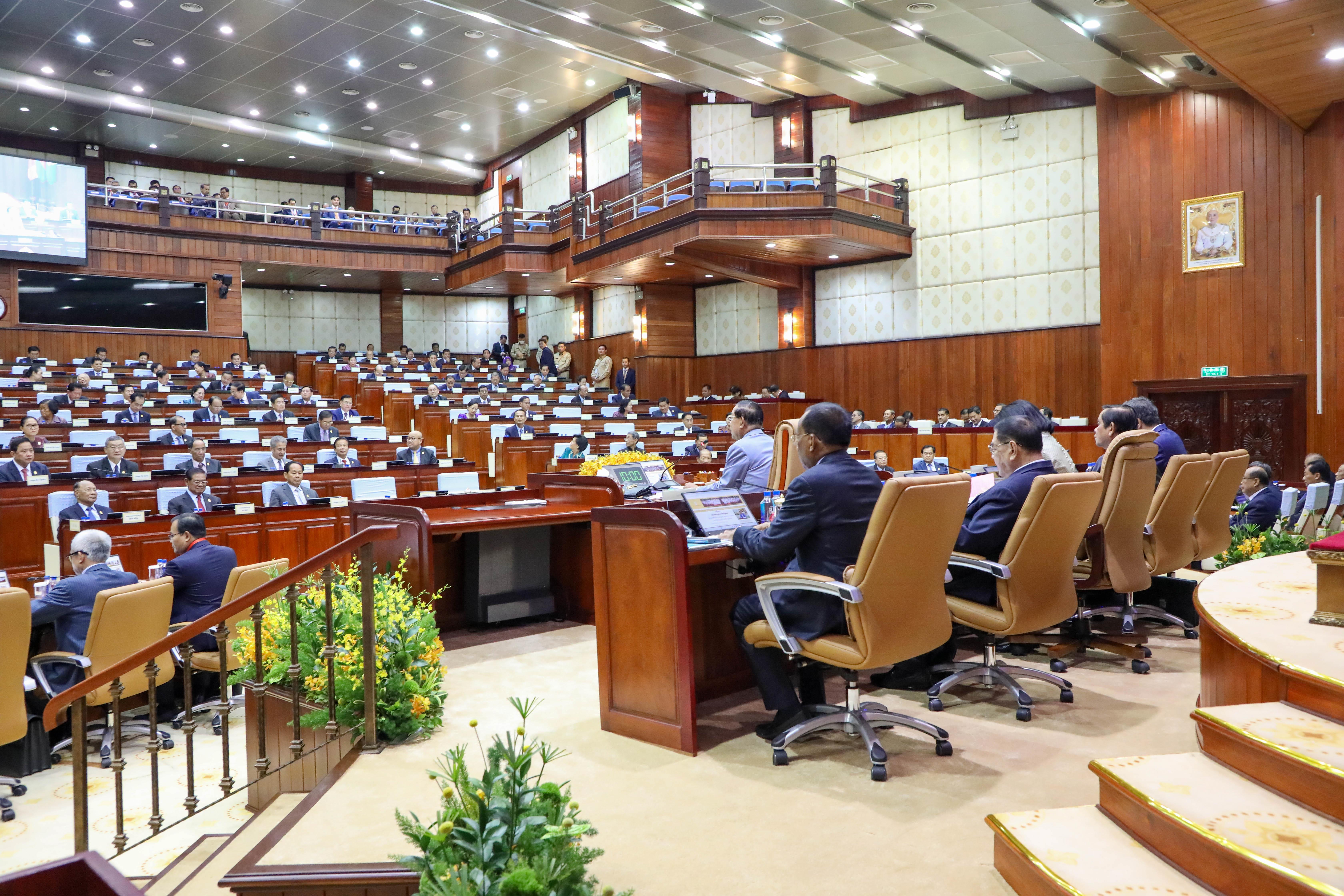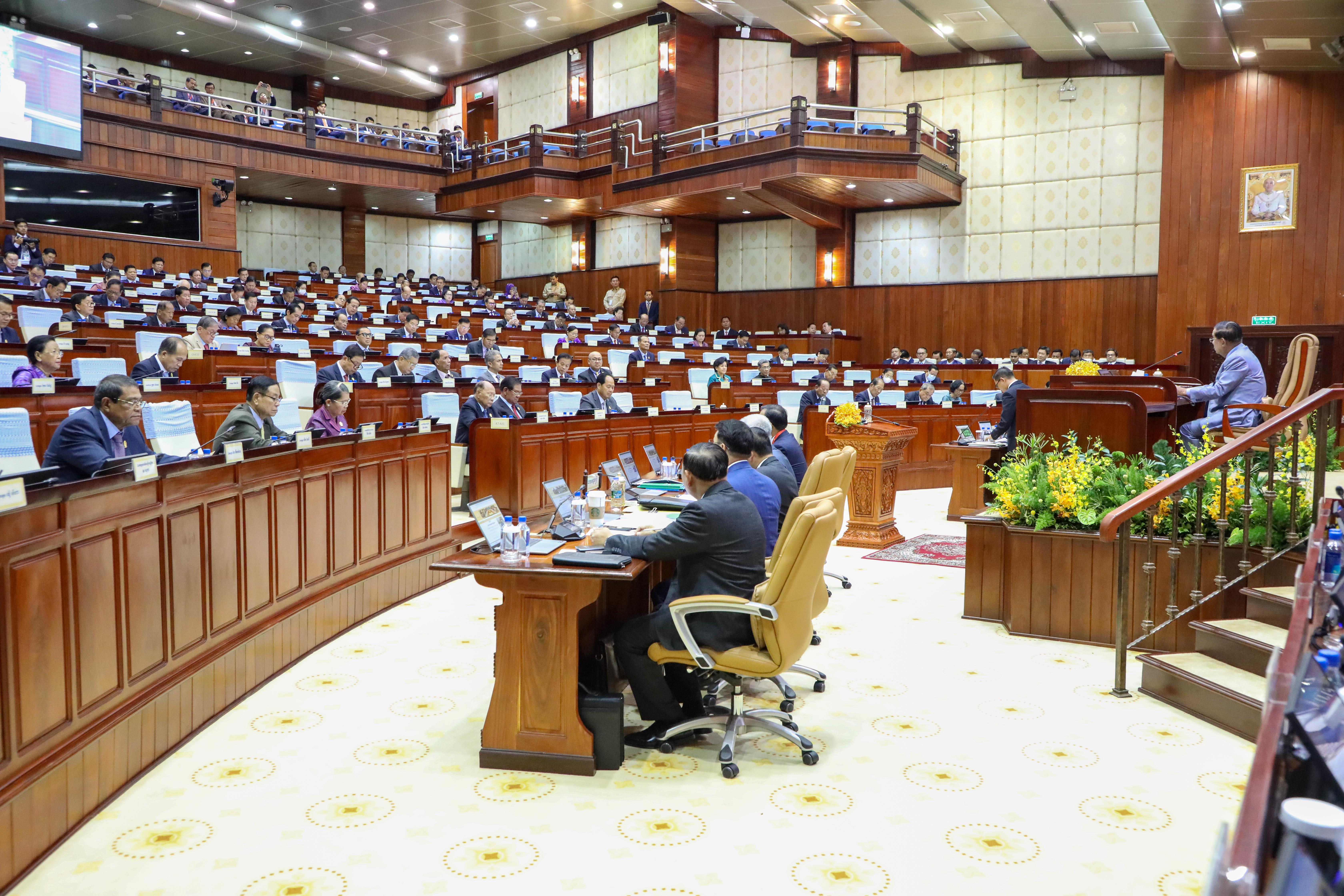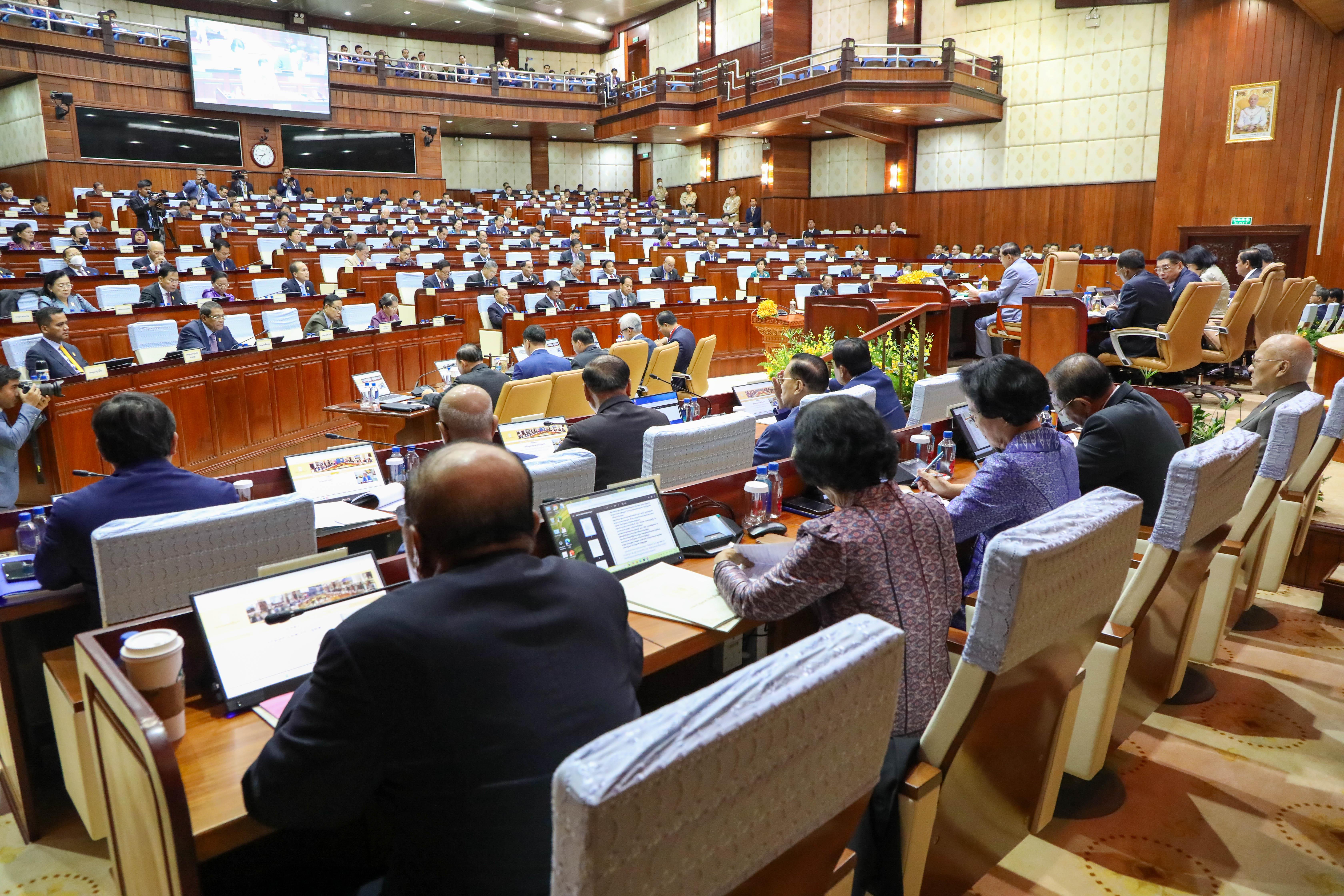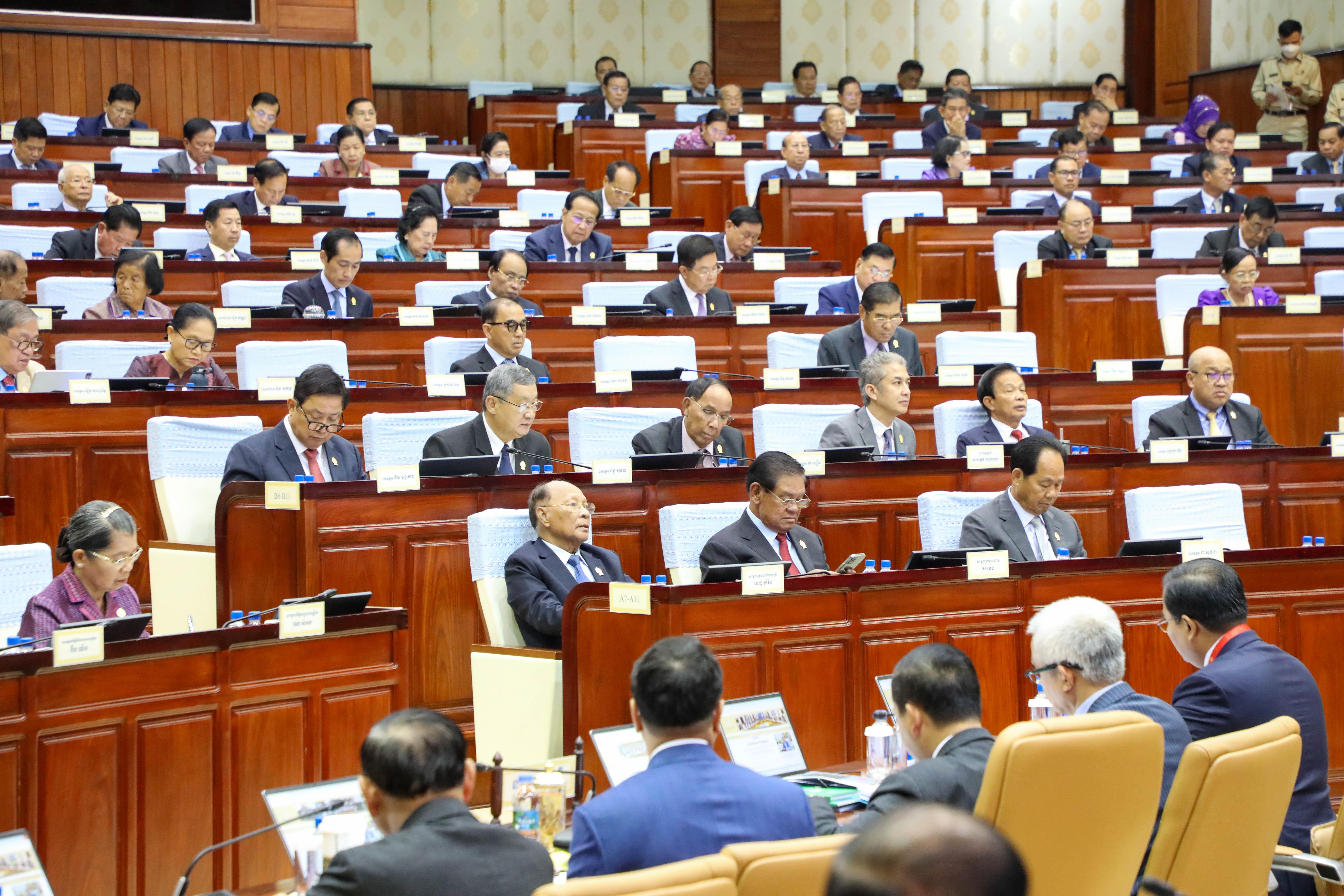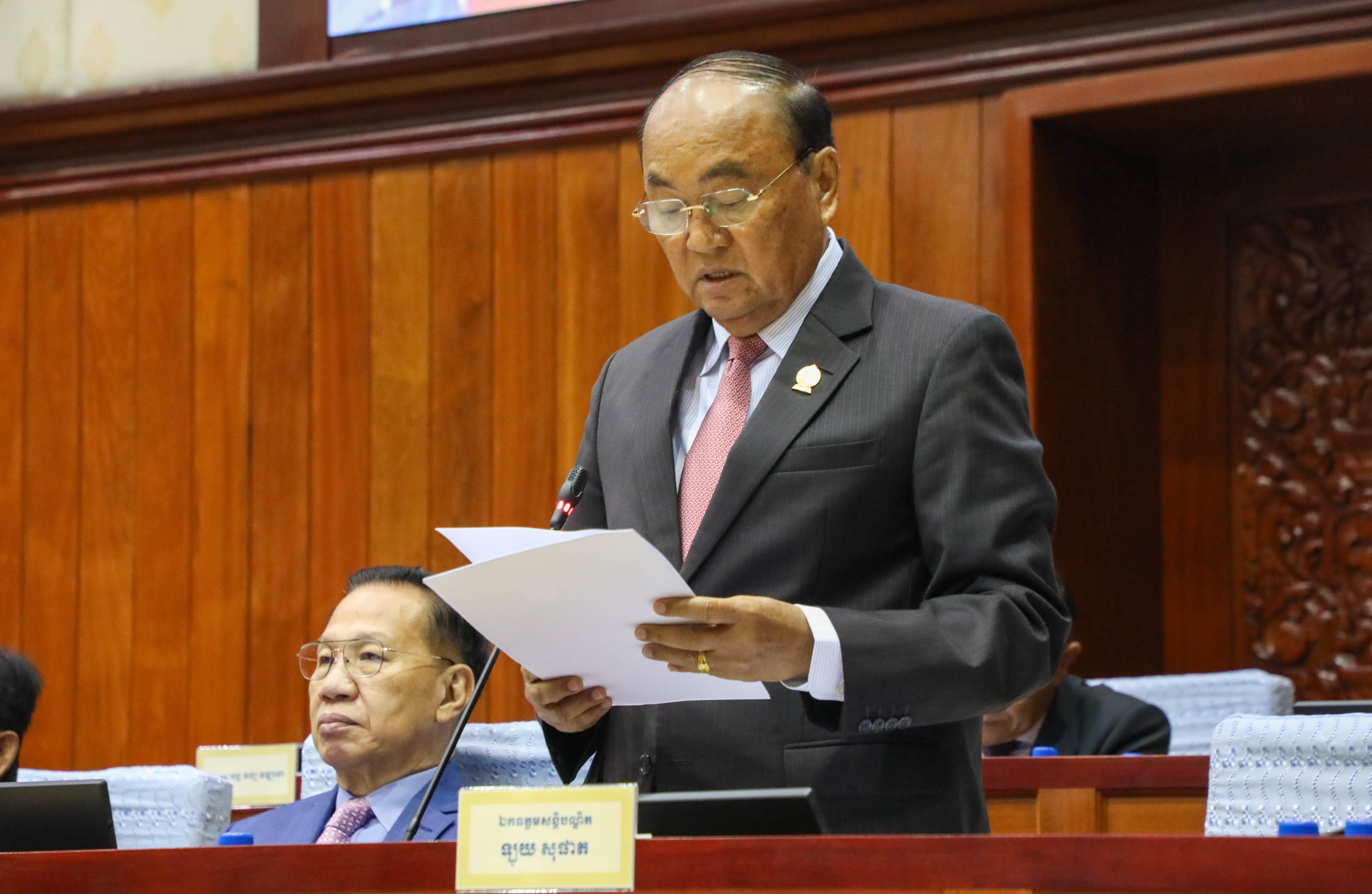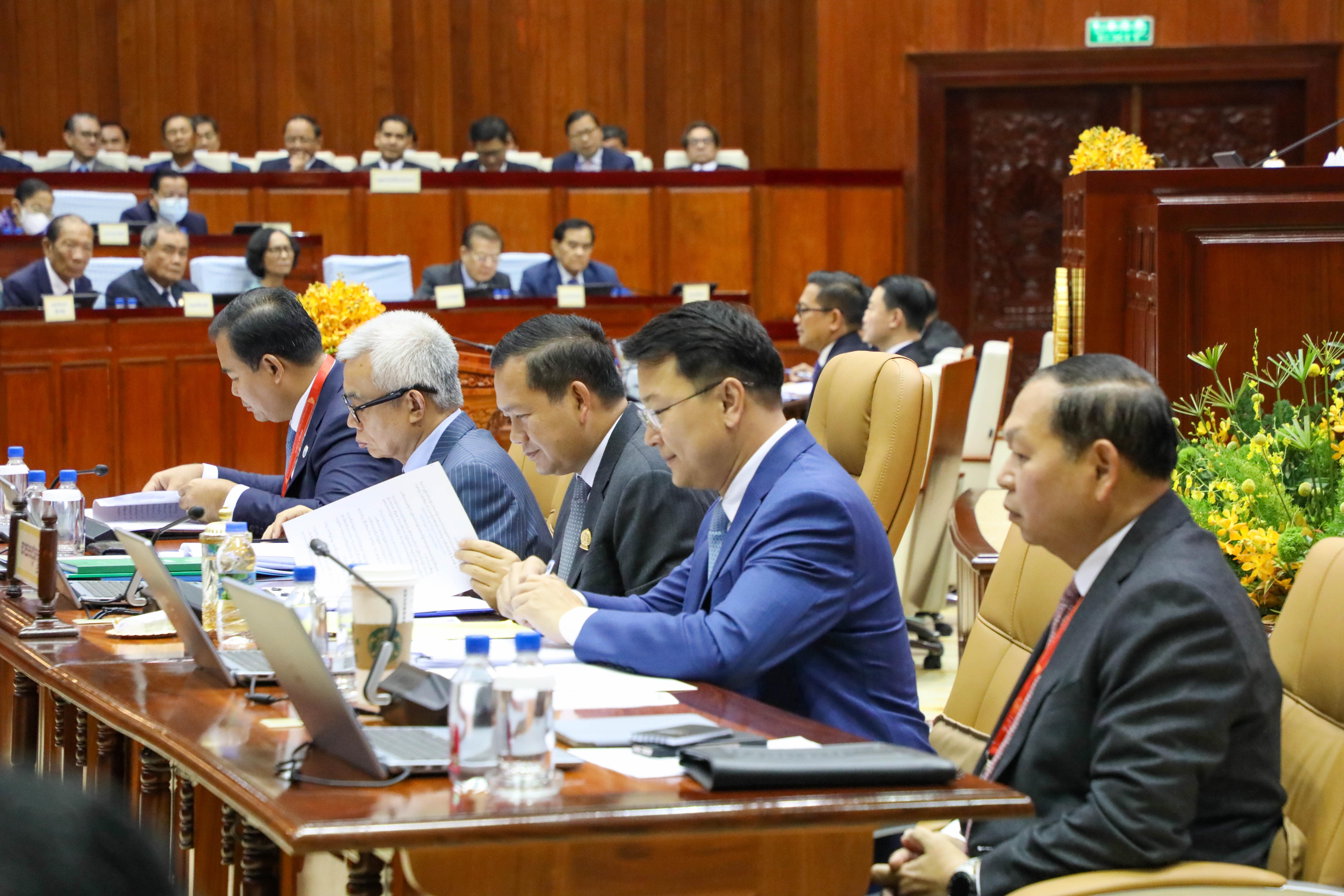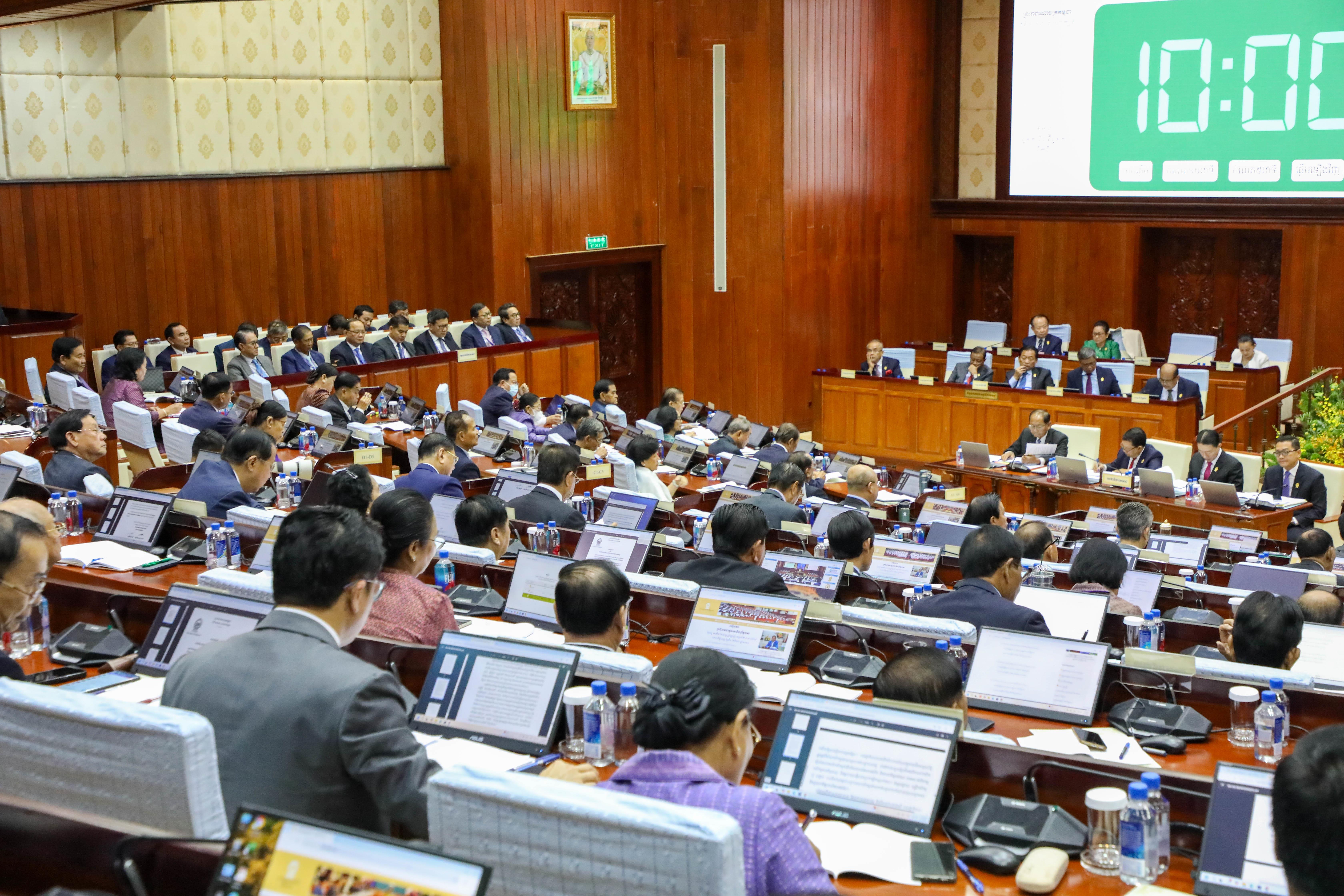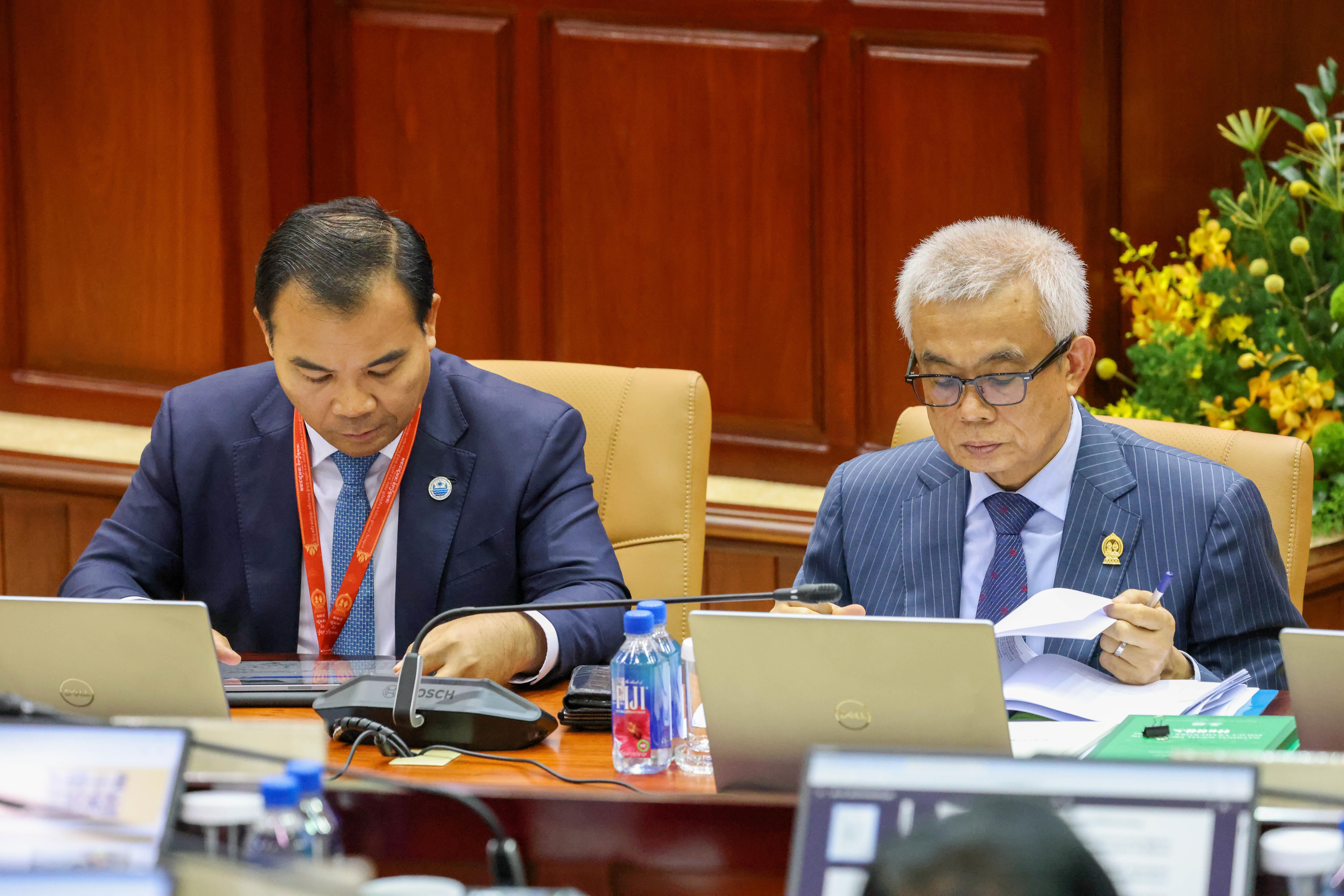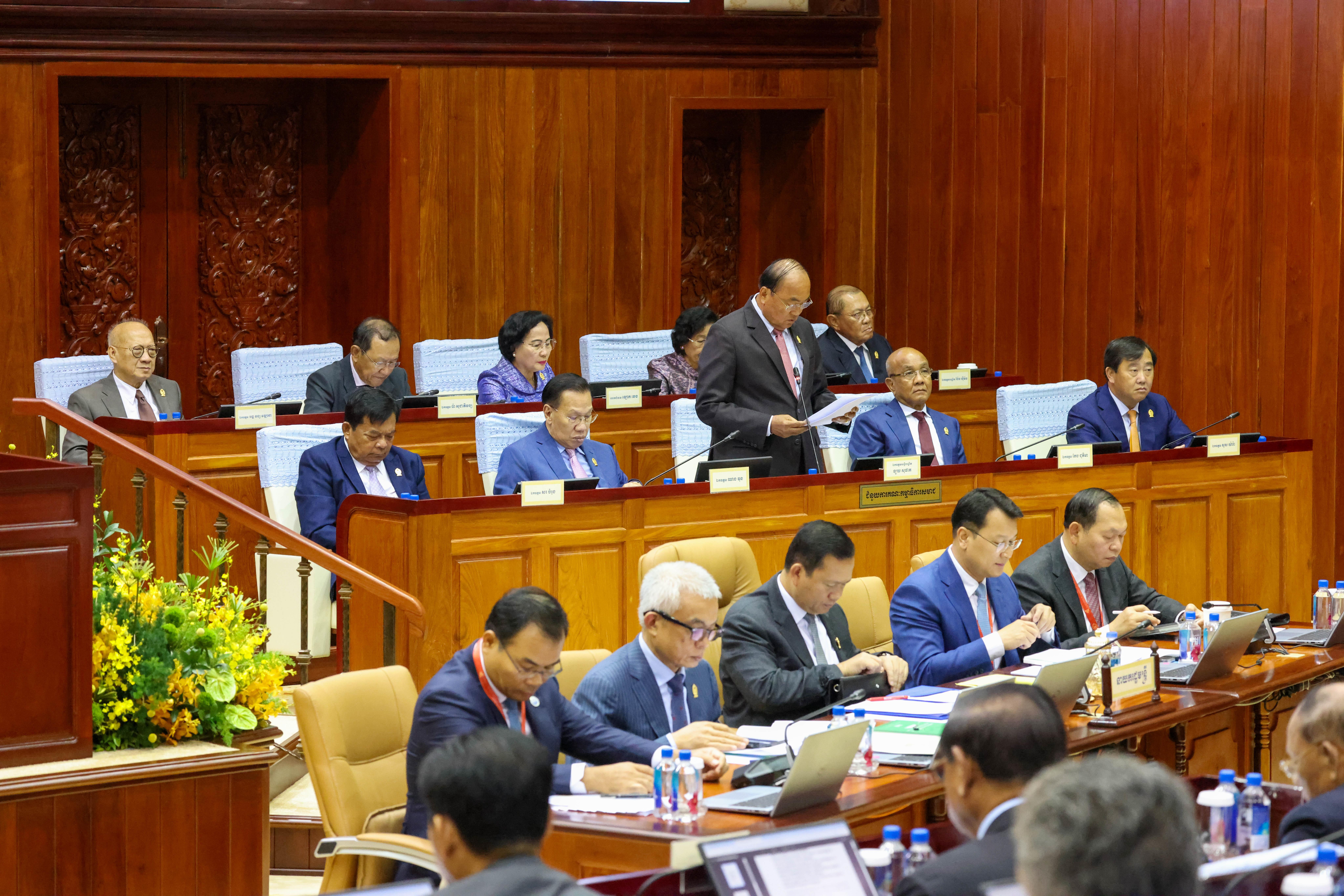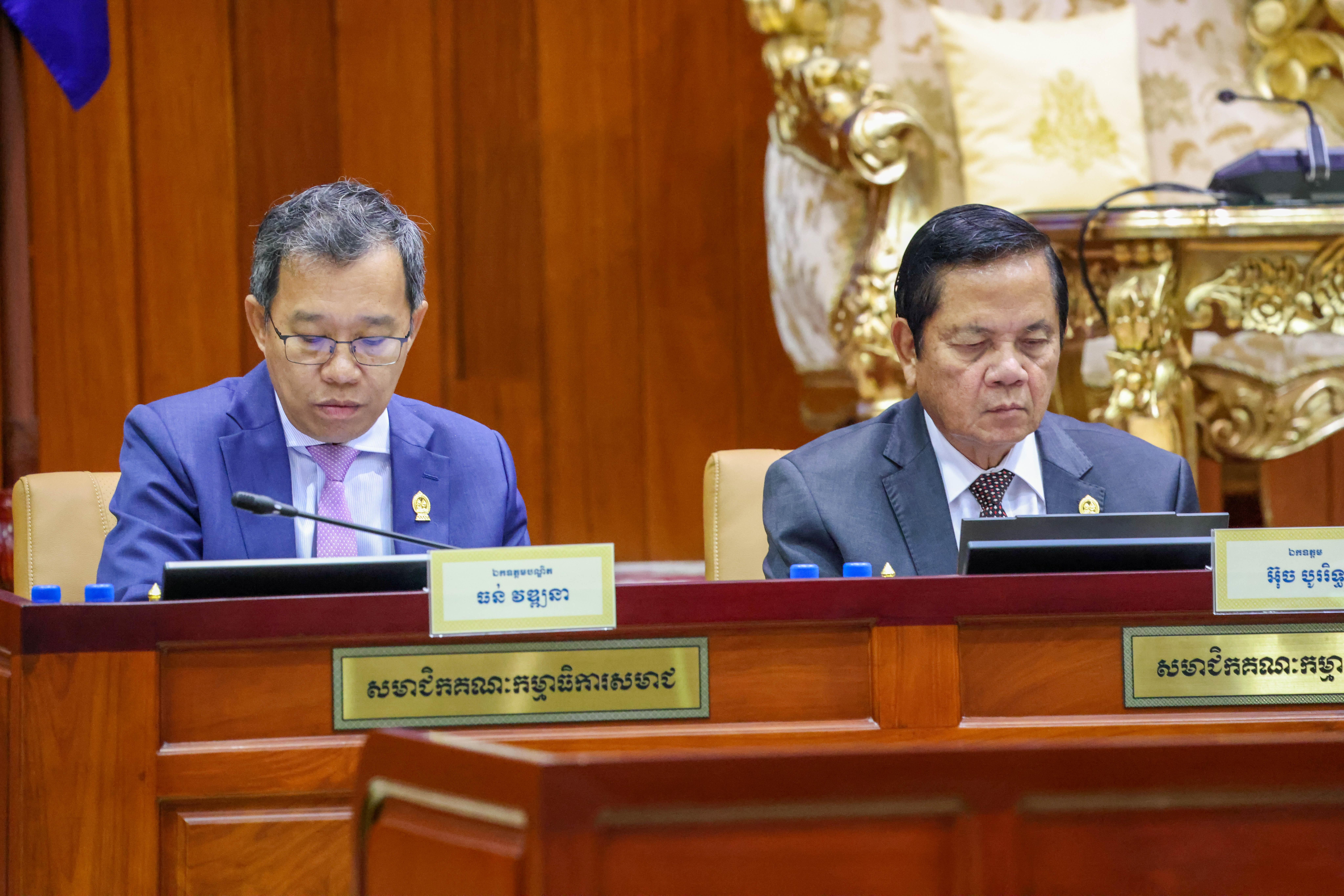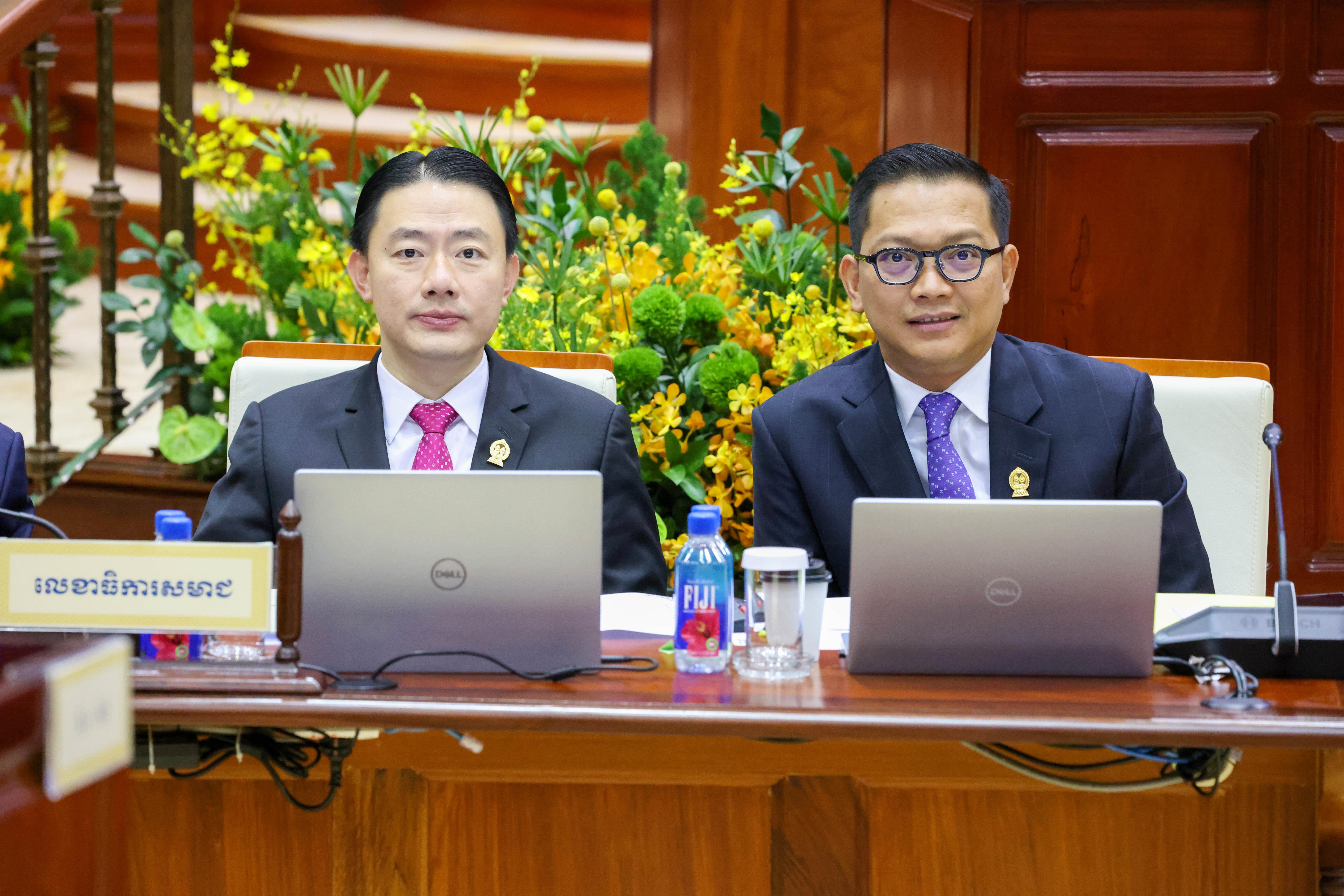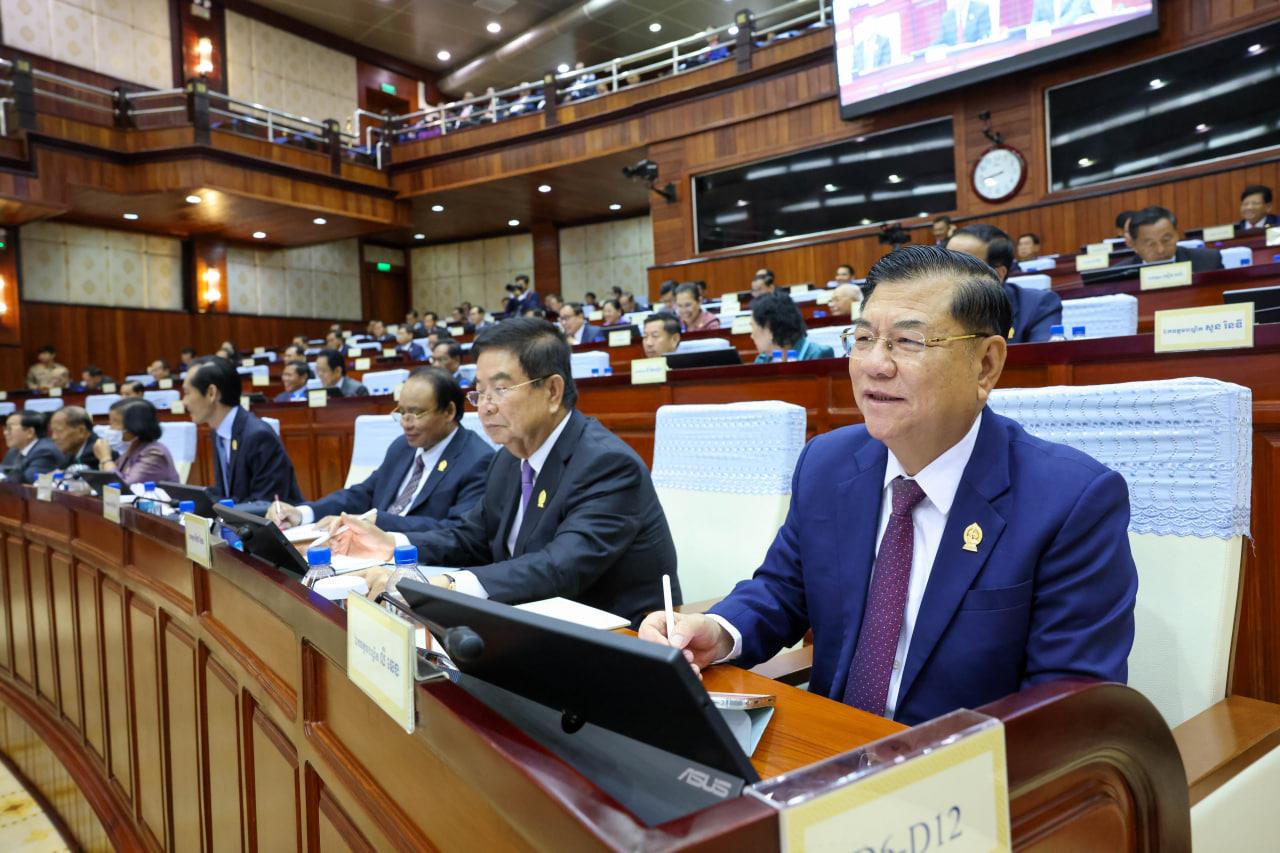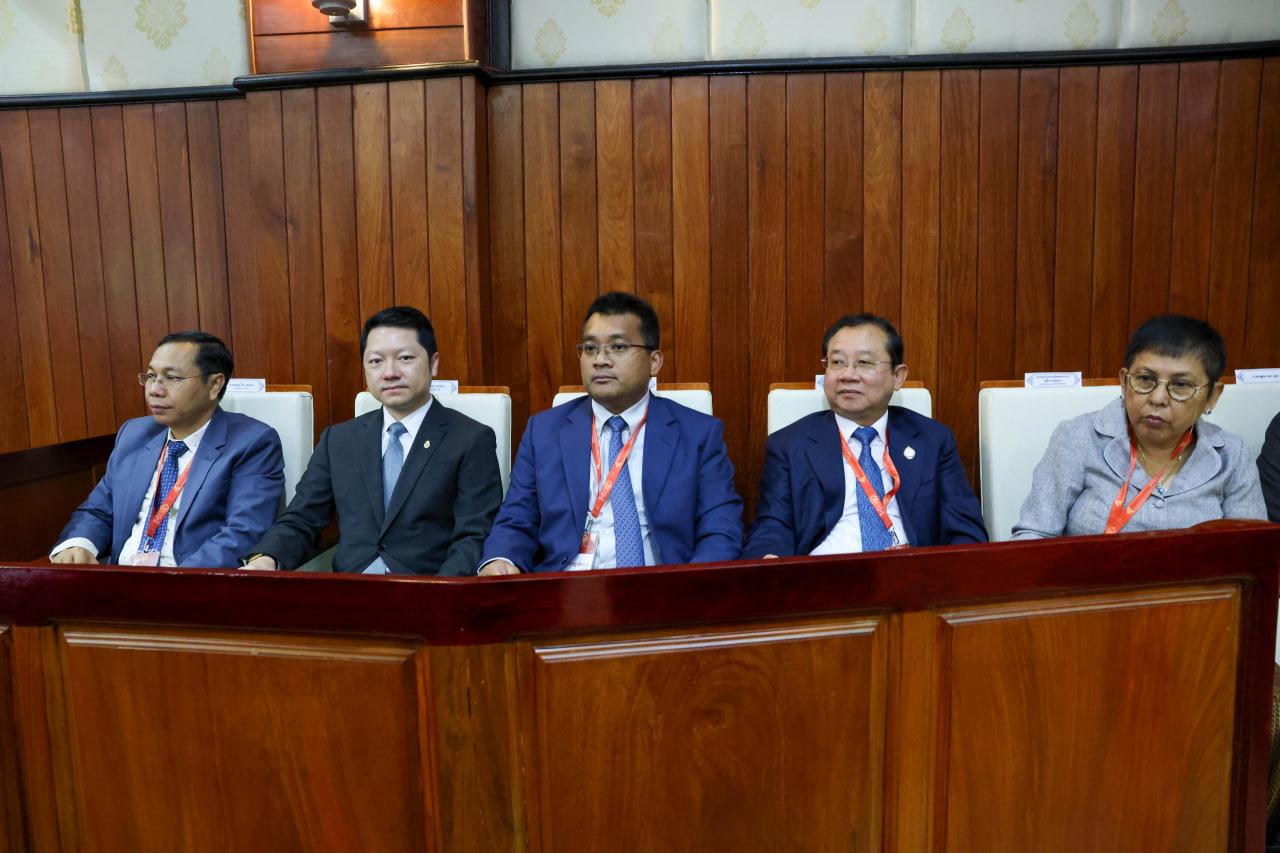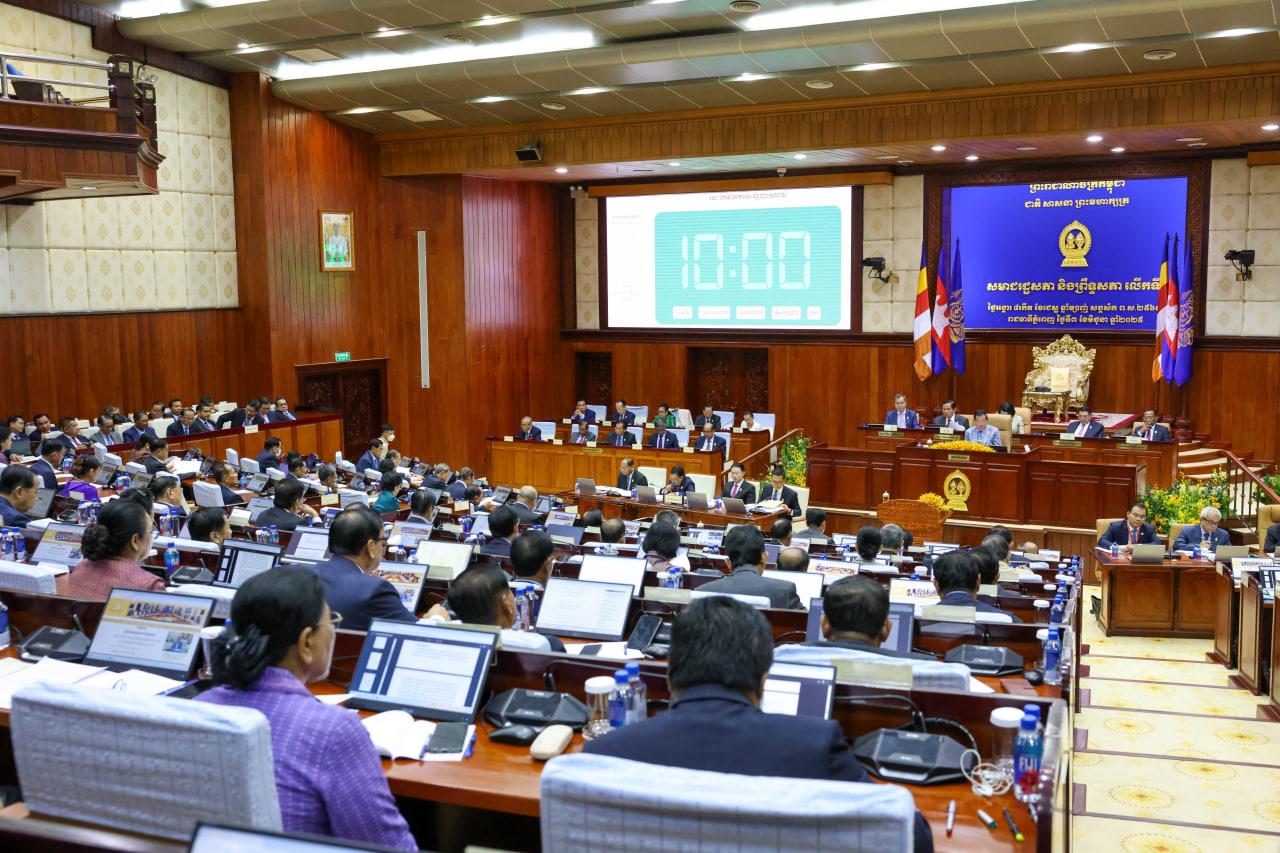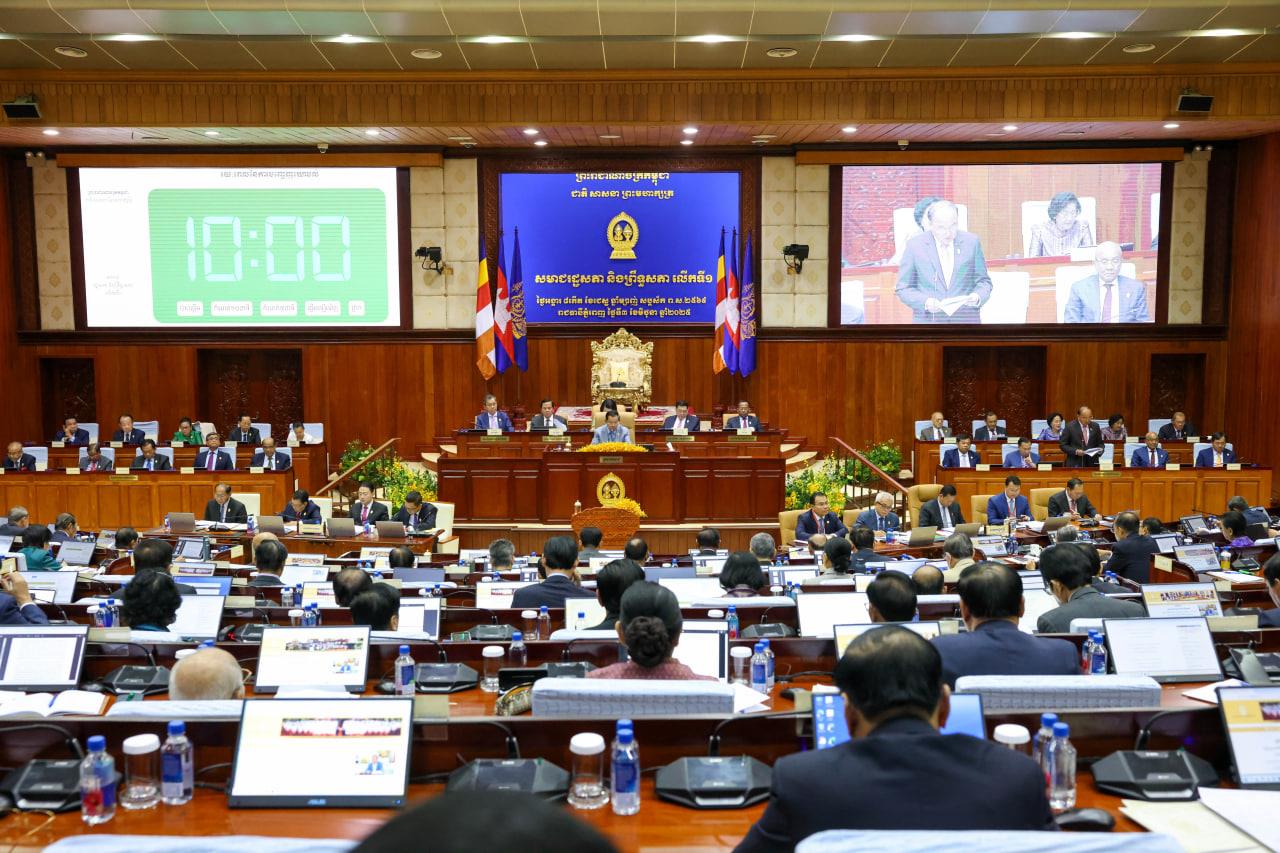(Phnom Penh): Cambodian President of the Senate, Samdech Techo Hun Sen shared an agricultural strategy first introduced in 1987, which he described as broad-based development (rooted in traditional Khmer farming practices) and in-depth development (addressing water issues, increasing cropping seasons, adopting new agricultural techniques, improving productivity, and reducing deforestation in response to population growth).
Samdech Techo spoke on Tuesday (Jun. 3) during the second day of the joint congress focusing on the agricultural sector.
Samdech Techo recalled that in 1987, the government identified four key development priorities including water, road, electricity, and people. These priorities remained in place through to the seventh-mandate, which later added a fifth priority—technology.
Samdech Techo stated that during that time, the government’s focus in the agriculture sector was on solving water-related issues. At the time, Samdech Say Chhum served as Minister of Agriculture, and Chea Soth as Minister of Planning. Together, they developed a strategy “From Broad-Based to In-Depth Development.”
Samdech Techo Hun Sen explained that Cambodian tradition once held that five people required one hectare of land. As the population grew, say to 10 people, they would need two hectares, and so on. This approach risked labor overexploitation and increasing deforestation. To address this, the government focused on improving productivity on existing land, by addressing water issues, increasing crop cycles, and introducing agricultural innovations.
“This is what we called ‘in-depth development’—making one hectare of land that once supported five people capable of supporting 10, 20, or even 30 people by ensuring water access and growing crops two or three times per year,” Samdech Techo underscored.
Samdech Techo also praised former Minister of Water Resources Lim Kean Hor for his leadership in tackling irrigation challenges after the establishment of the Ministry of Water Resources and Meteorology.
Samdech Techo Hun Sen recalled that even as late as 2002, Cambodia still relied on manual labor to dig irrigation canals. He and Lim Kean Hor personally participated in canal excavation from Rolang Chrey in Kampong Speu province, connecting to Ang Snuol district in Kandal and further to Dangkor district in Phnom Penh. To support villagers’ efforts, the government distributed rice—three kilograms per cubic meter dug—and after listening to their concerns, also provided smoked fish, salt, and other spices.
Thanks to these irrigation and water system improvements, one hectare of land that previously fed five people could now support ten or more.
Today, the agricultural sector accounts for only 16.7% of Cambodia’s GDP, compared to over 80% in the past. However, Samdech Techo Hun Sen emphasised that despite agriculture’s large share of the economy in the past, Cambodians still lacked enough rice for daily consumption. In contrast, Cambodia now produces about 7 million tons of paddy rice annually—equivalent to over 4 million tons of milled rice for export—alongside other key exports like mangoes, cashews, and rubber.
Samdech Techo highlighted, “We must not assume that a country is weakening just because agriculture’s share of GDP is decreasing. Look at advanced countries like Japan, the United States, and France—their agriculture sectors account for only around 1% of GDP, yet they can feed their populations and still export. Their industrial and service sectors have grown—just as Cambodia’s industry is growing today. So, we must modernise agriculture, but that doesn’t mean Cambodia’s agriculture is in decline.”
Samdech Techo Hun Sen also recalled a 2004 helicopter trip with the president of the Asian Development Bank (ADB) to Poipet to discuss railway connections. Pointing to the dry fields below, he said, “That is Cambodia’s remaining potential.” The ADB president was surprised that dry land was seen as potential, but Samdech Techo Hun Sen explained that at the time, the land could only yield one crop per year. Solving the water issue, however, could unlock significantly higher productivity.
=FRESH NEWS


